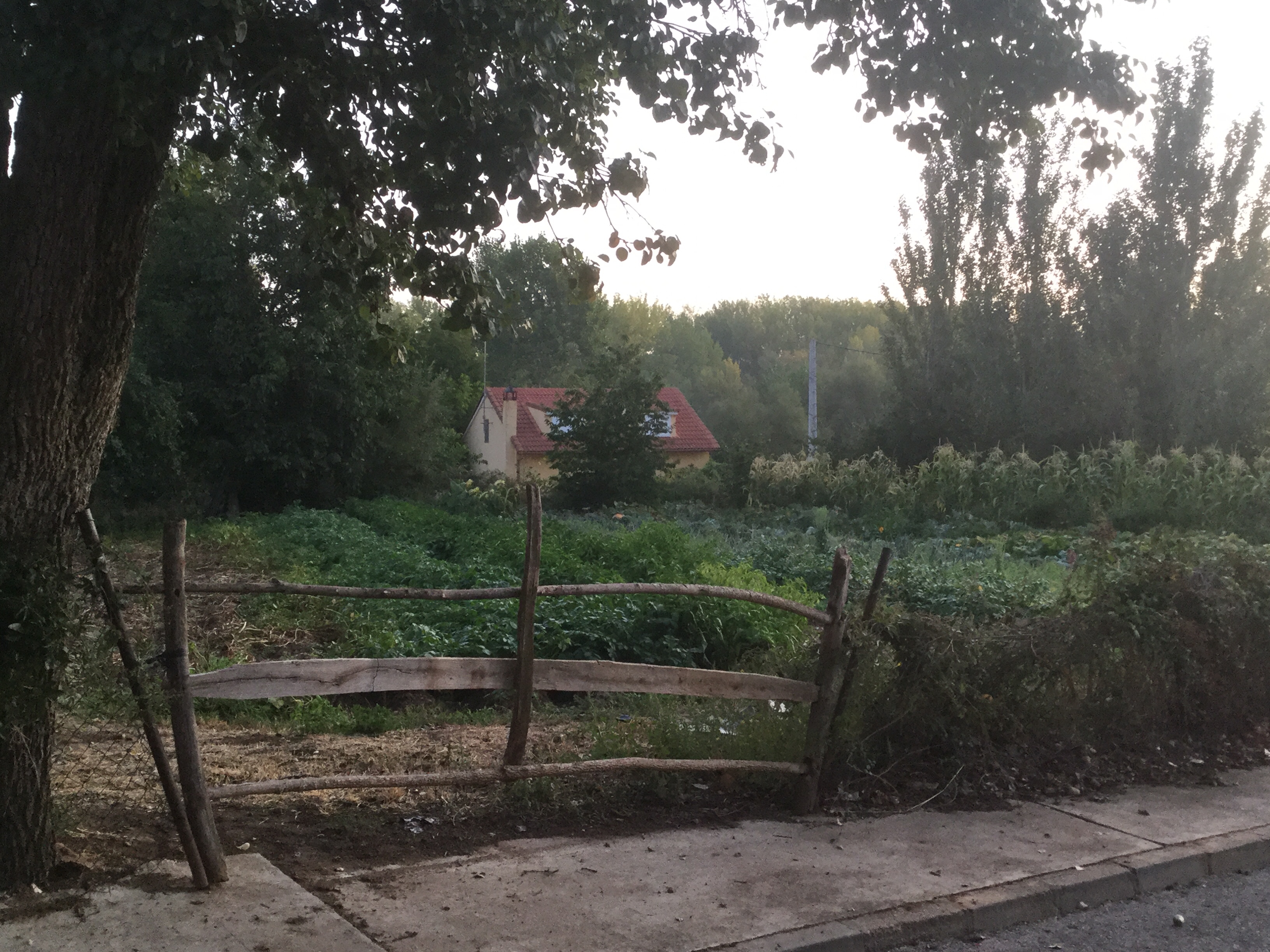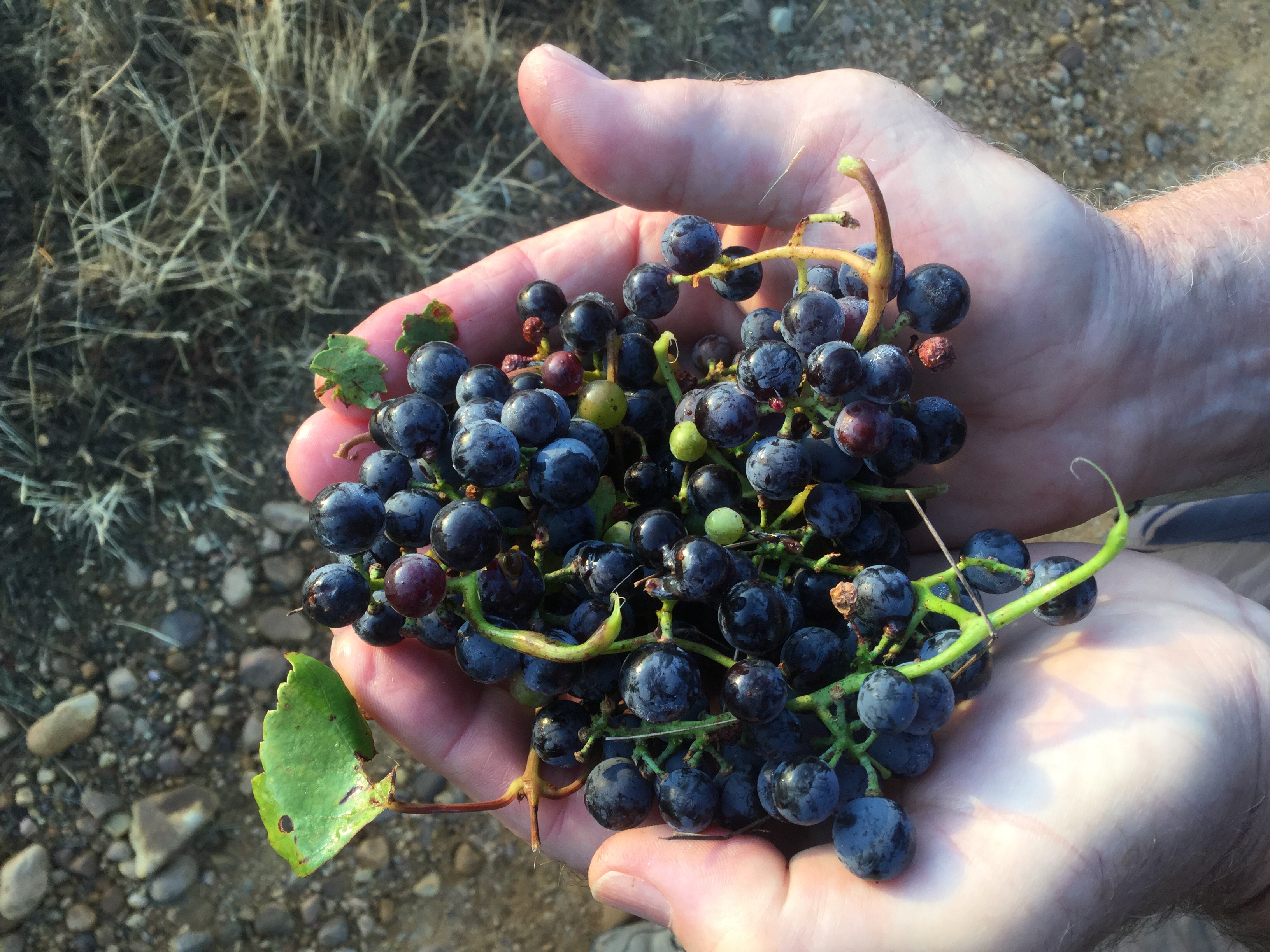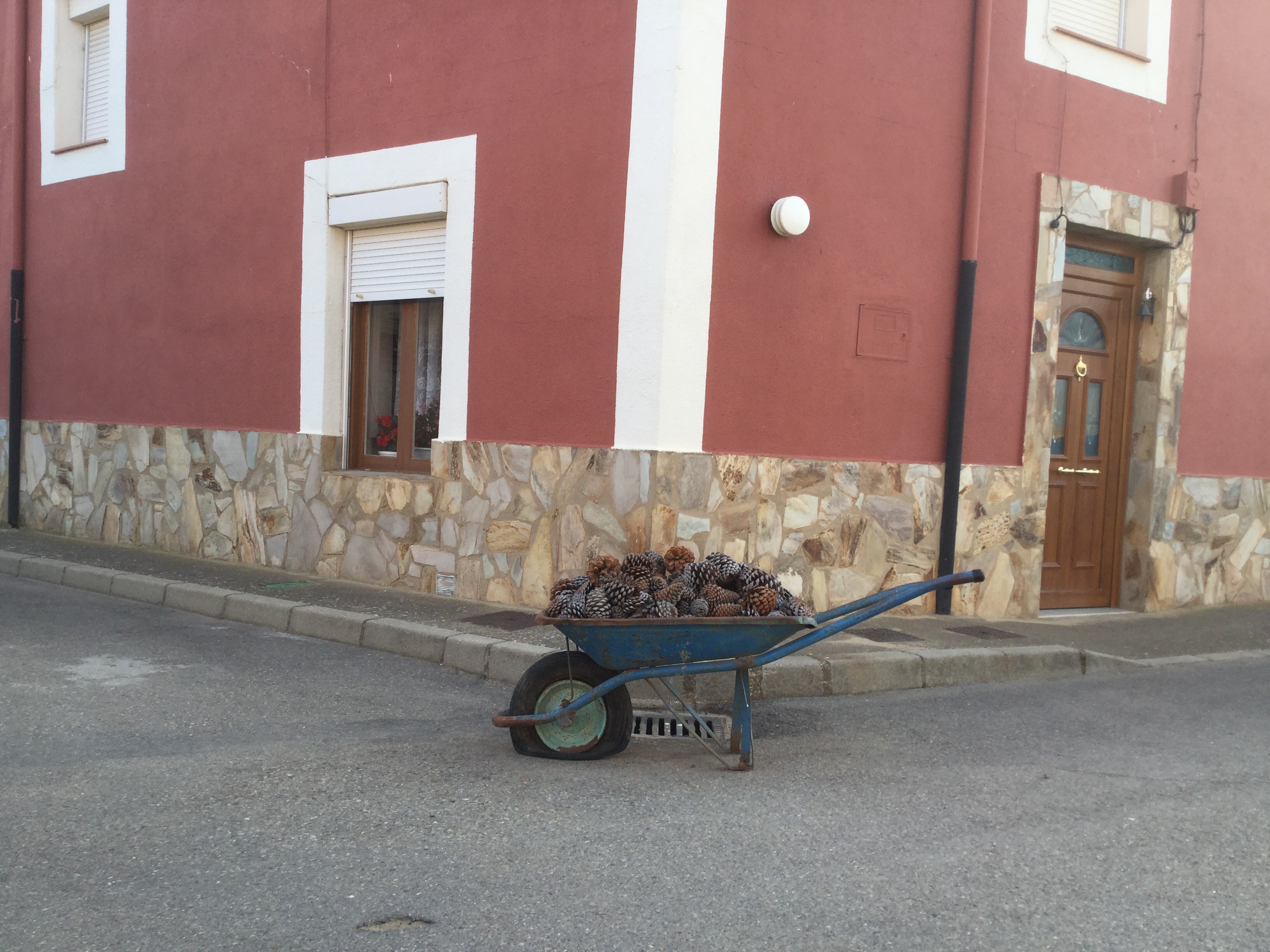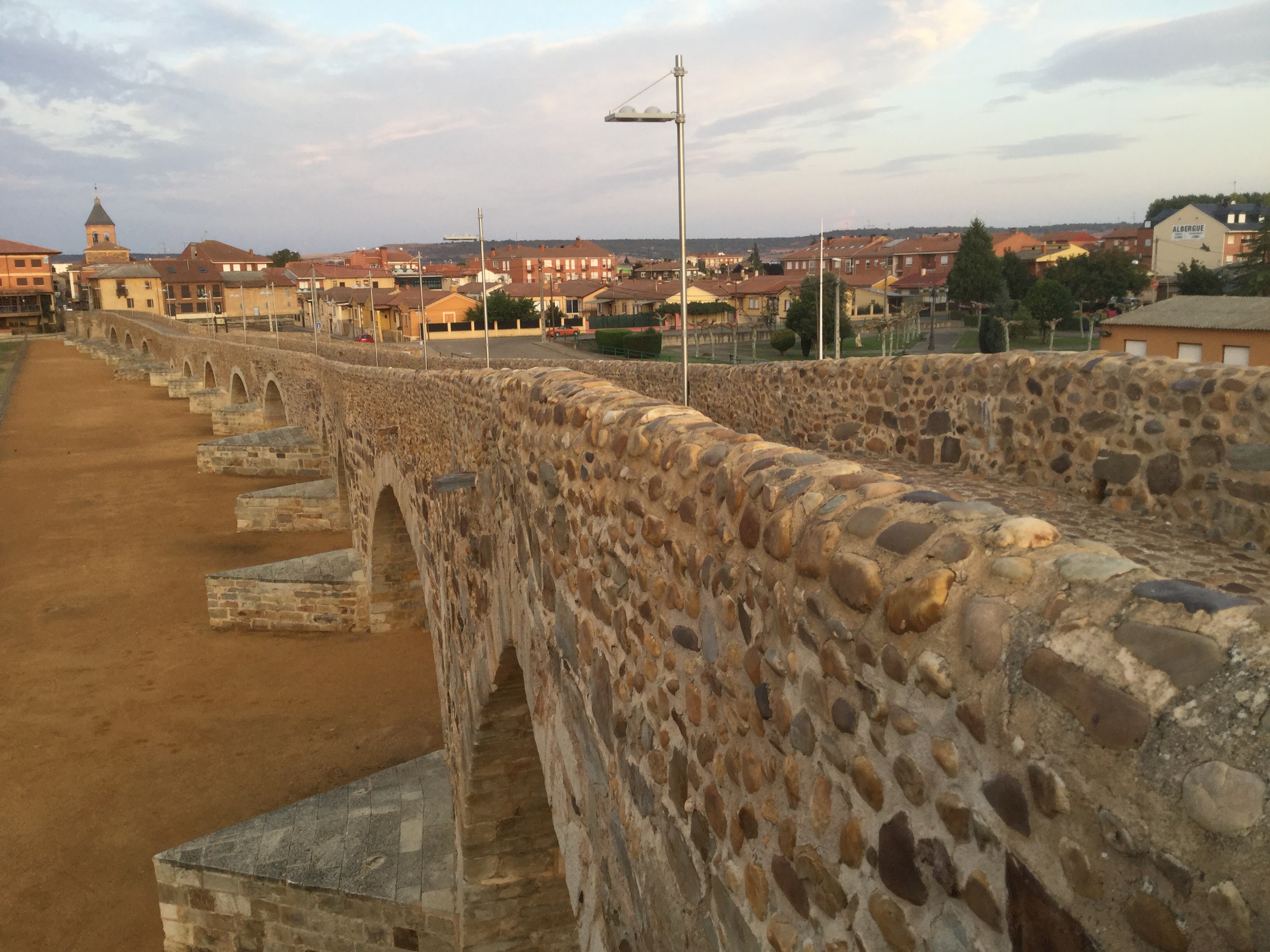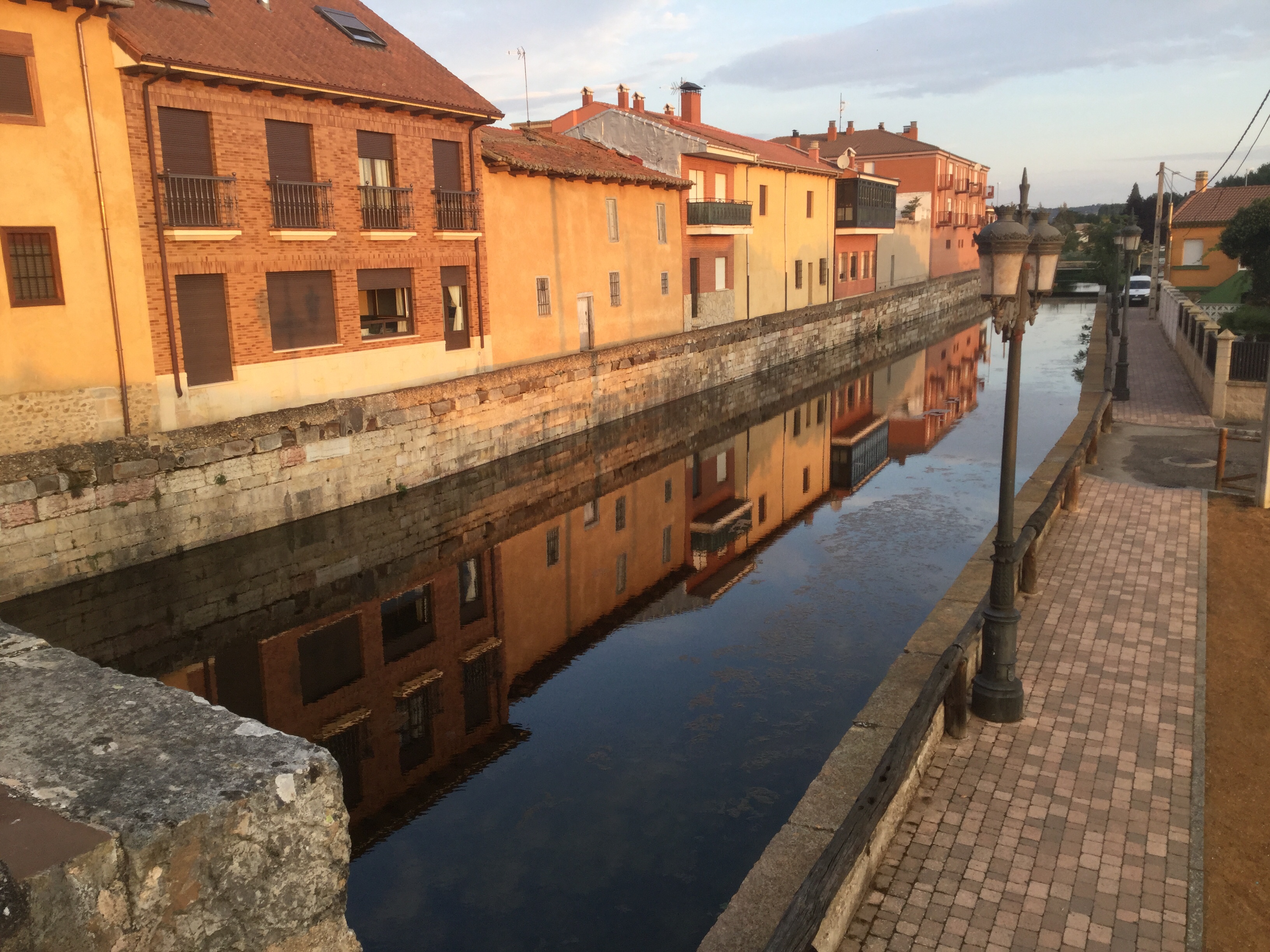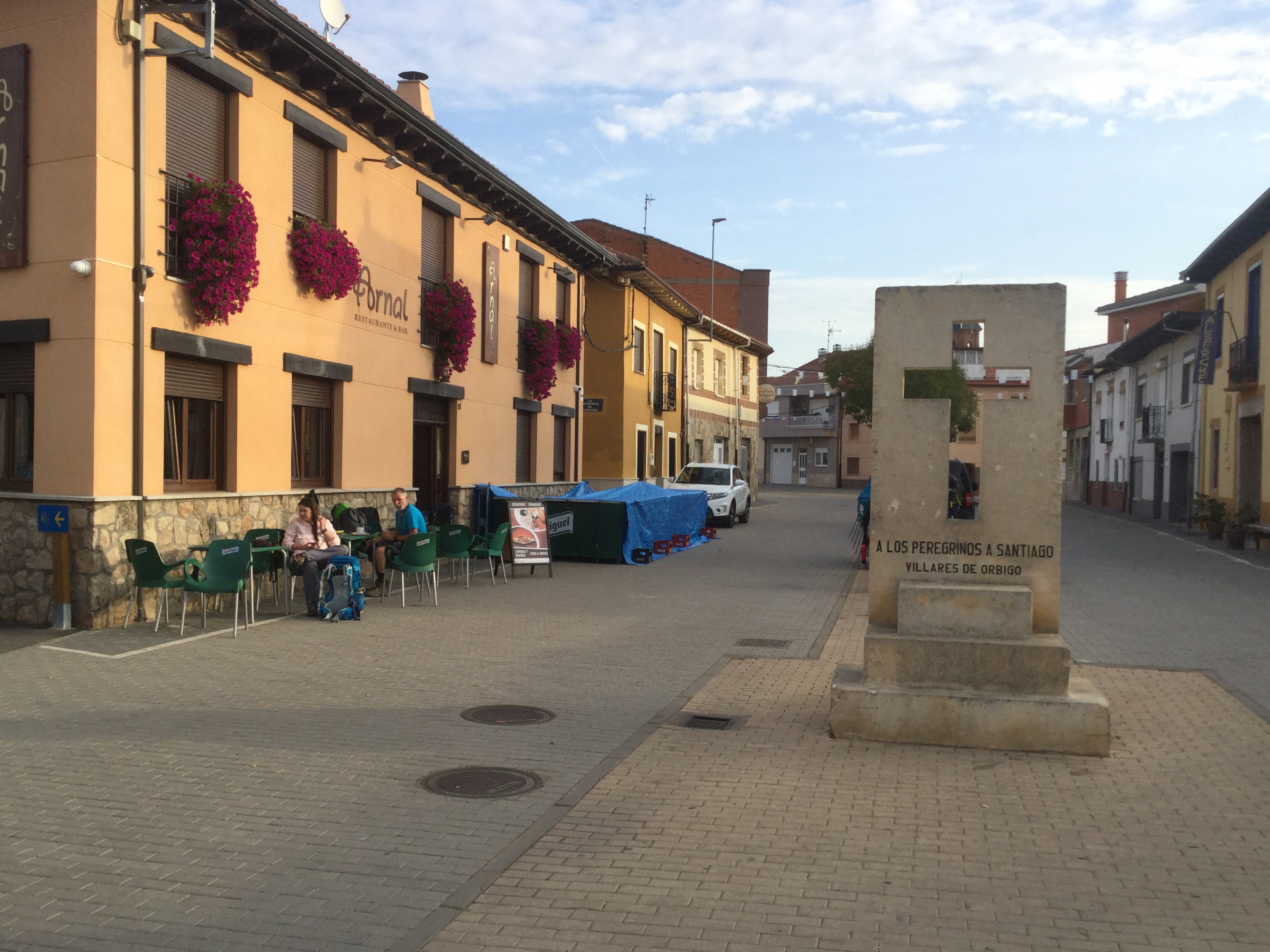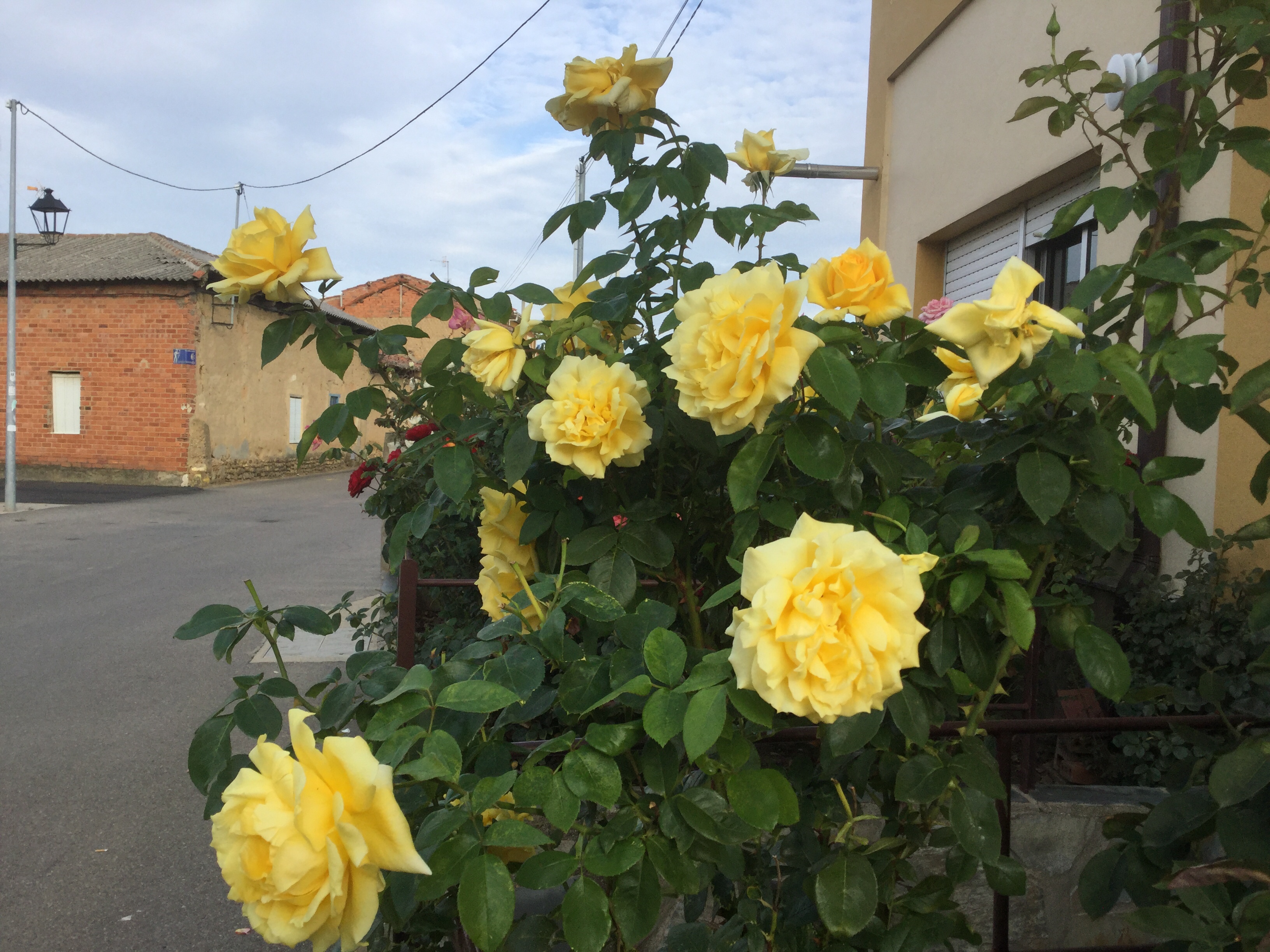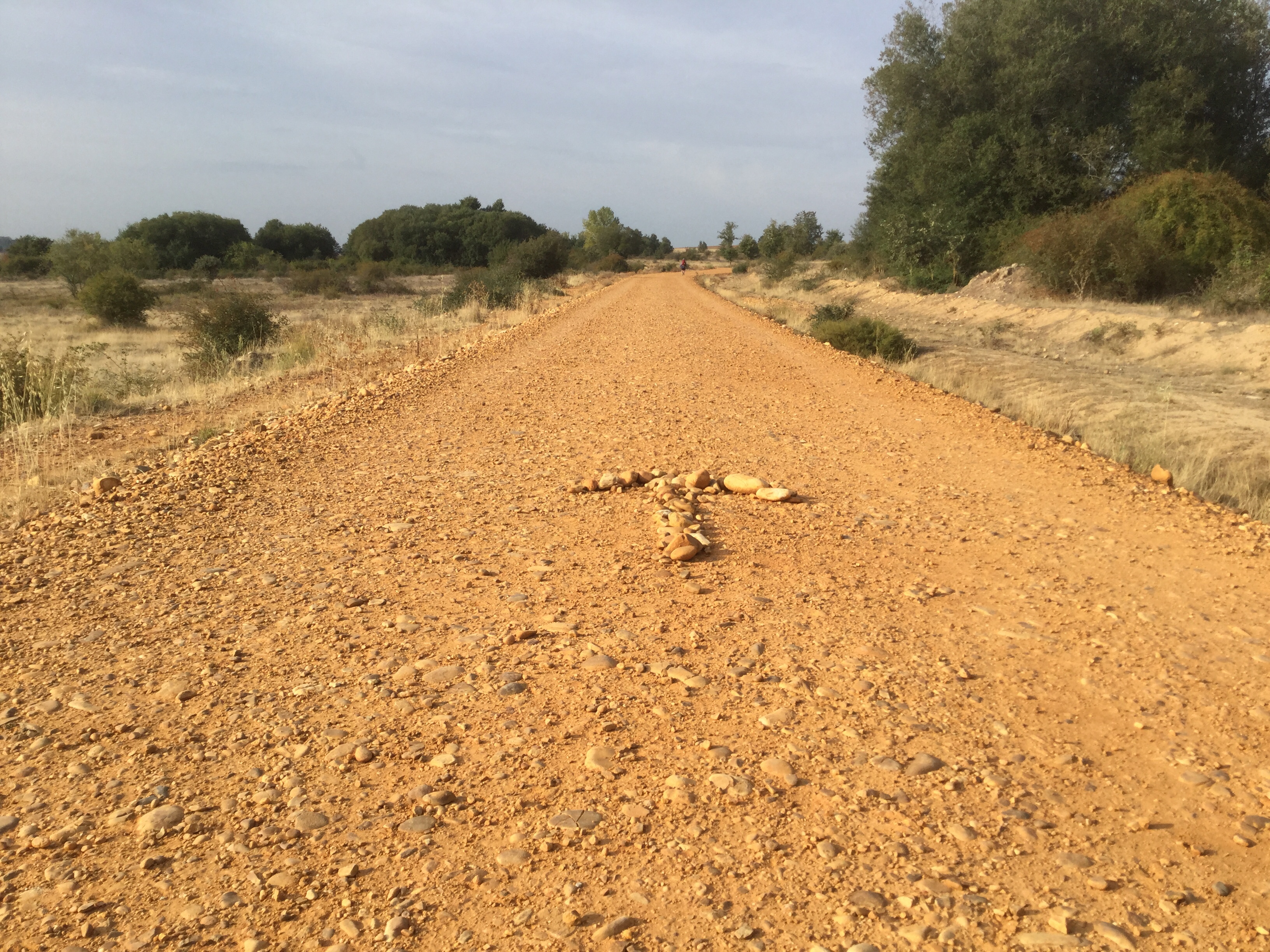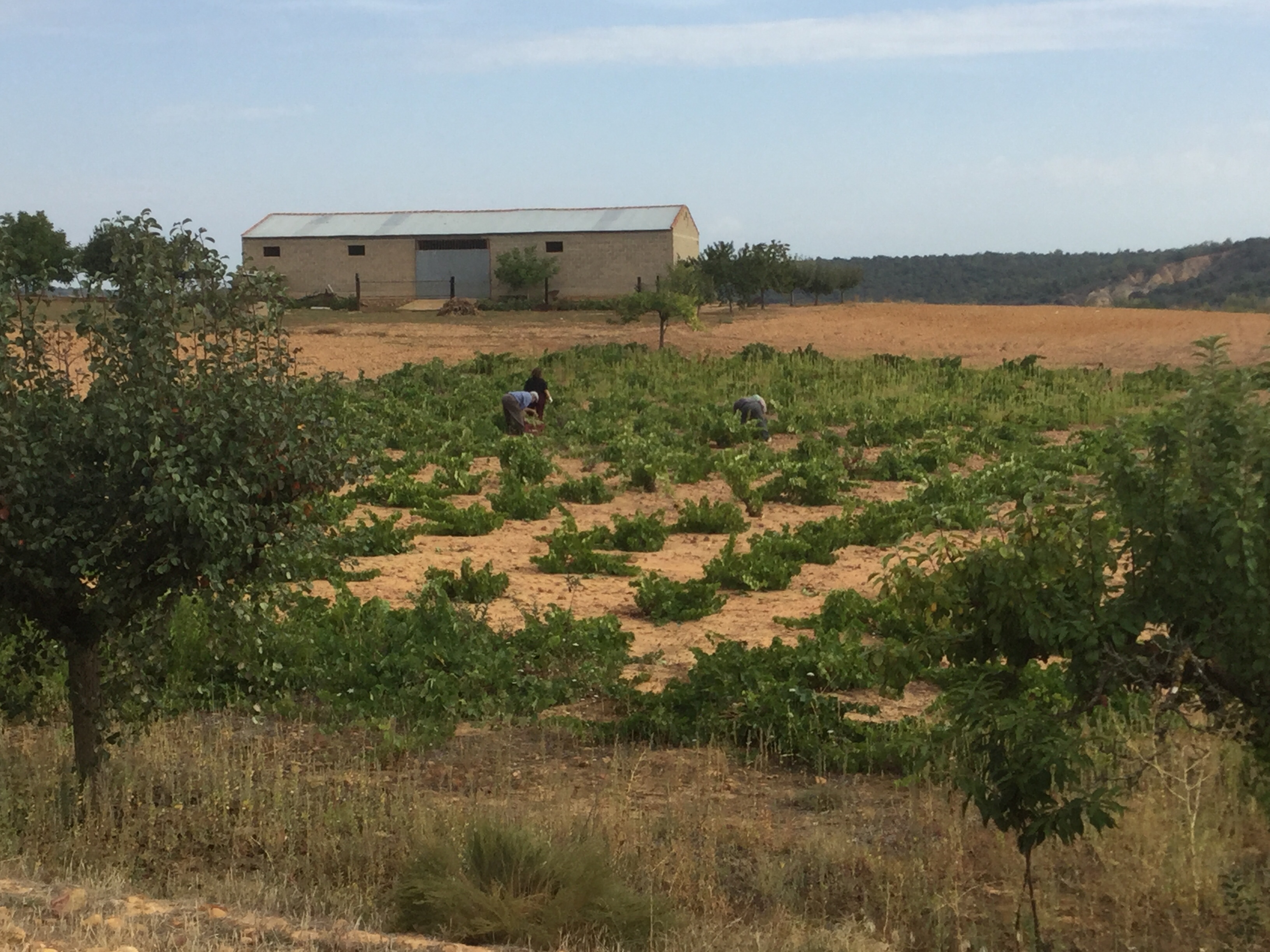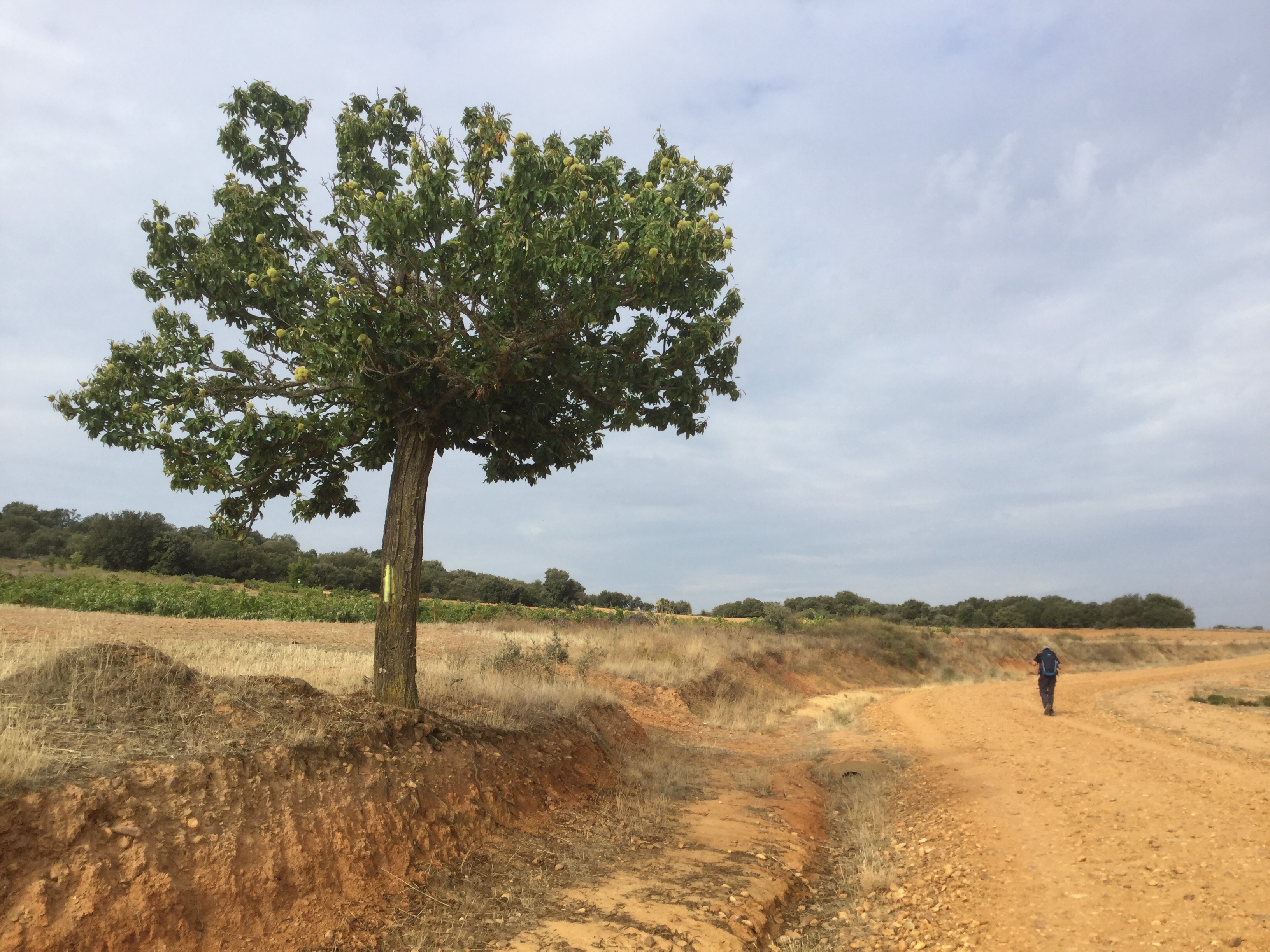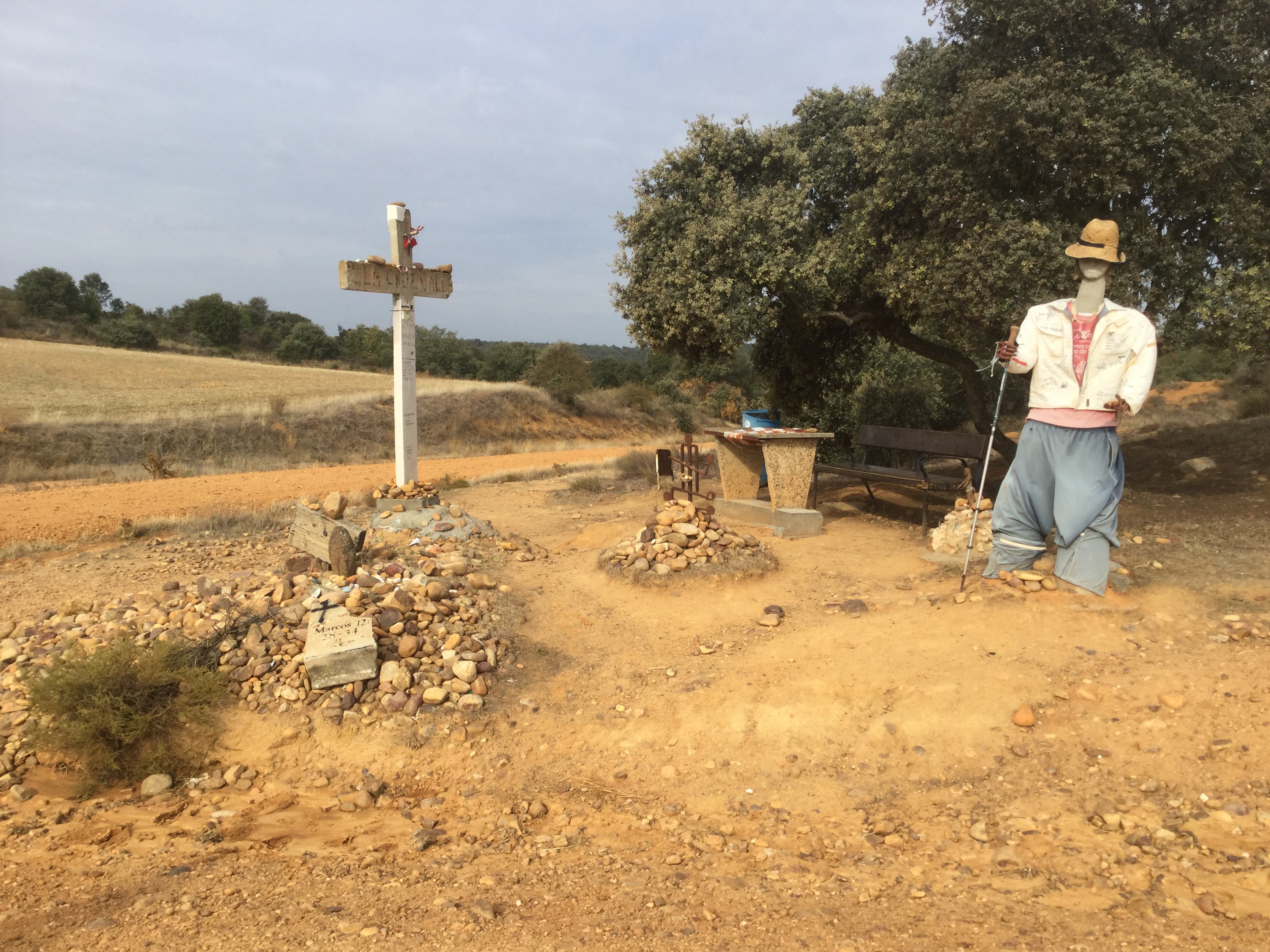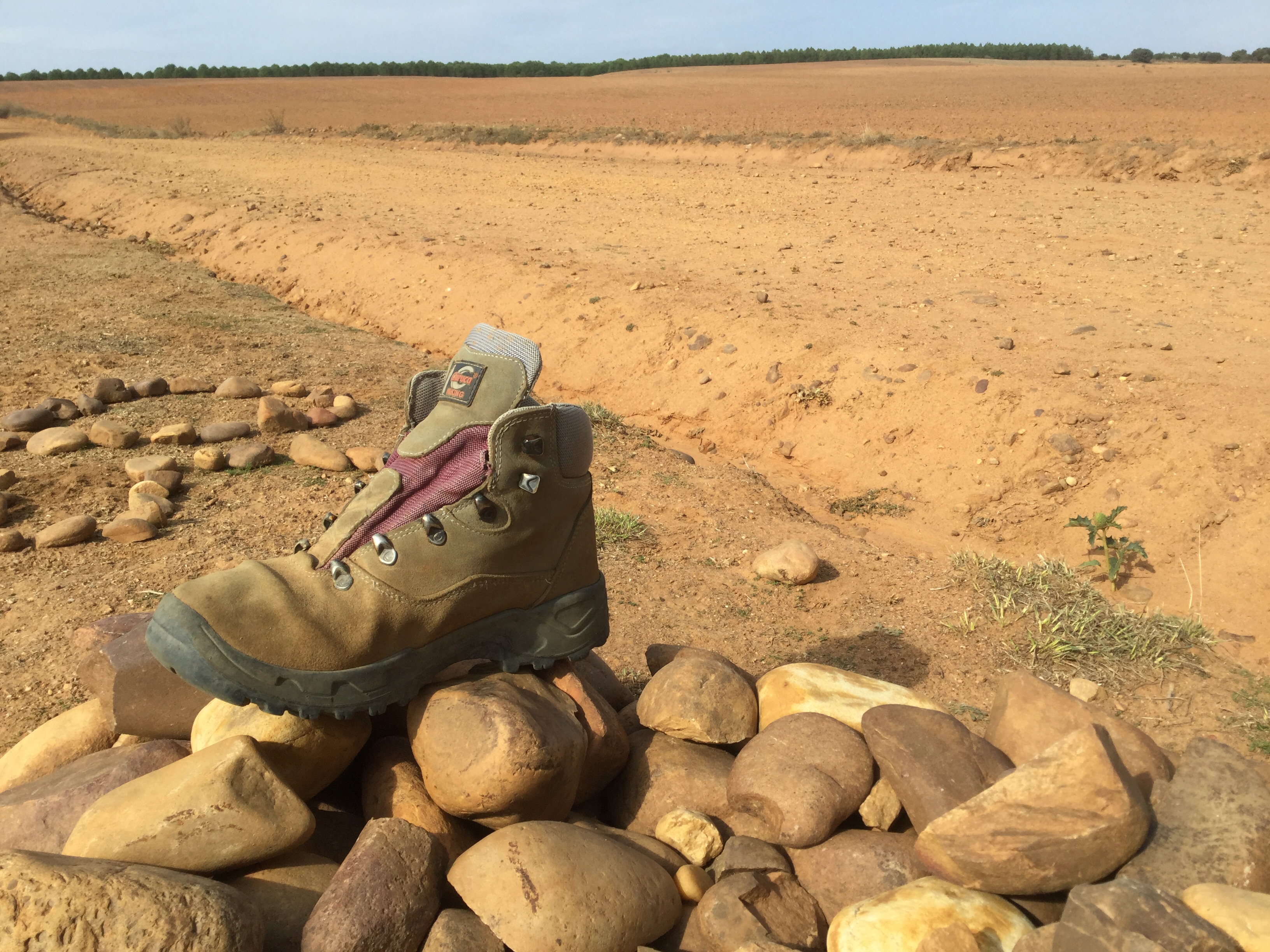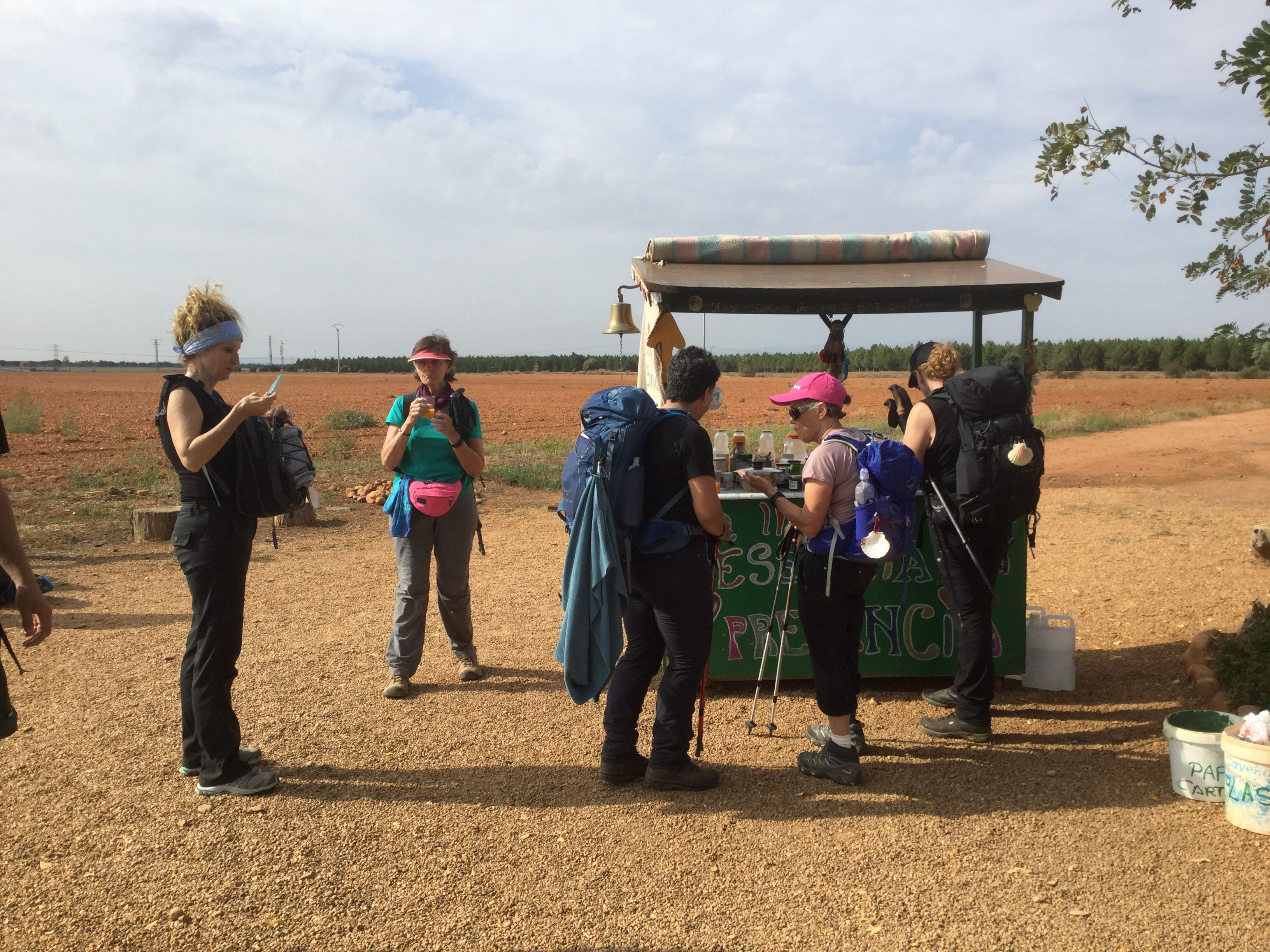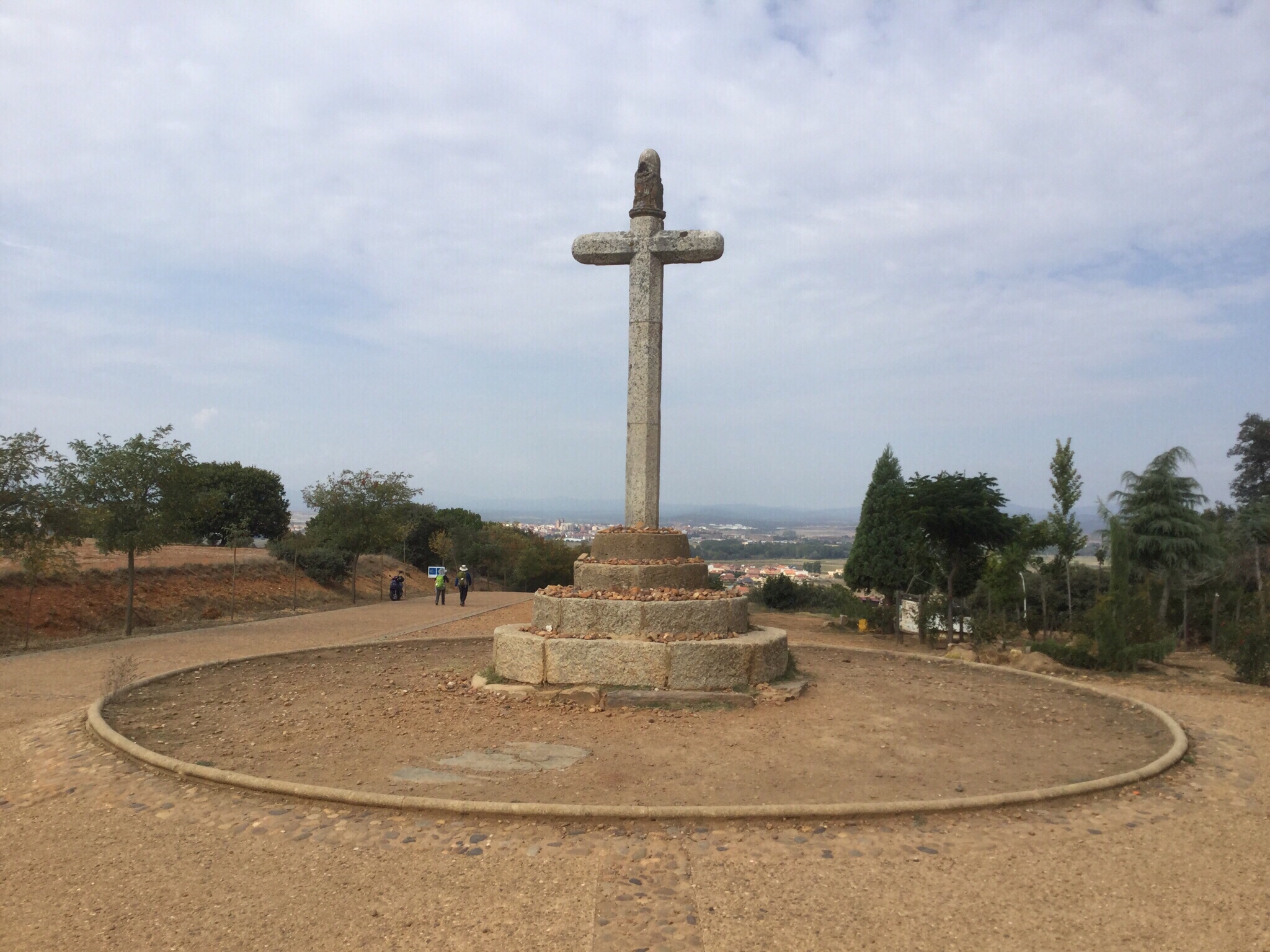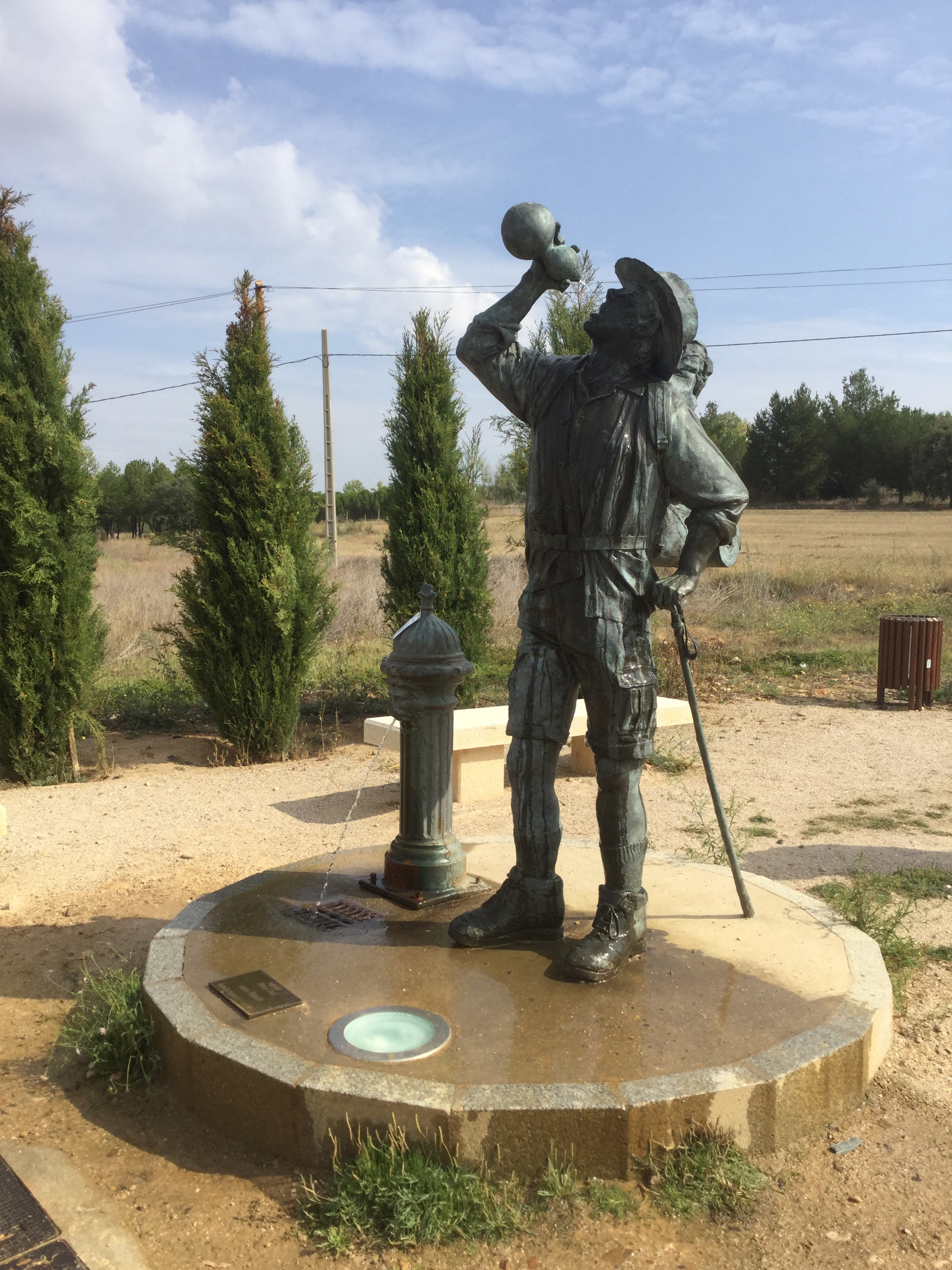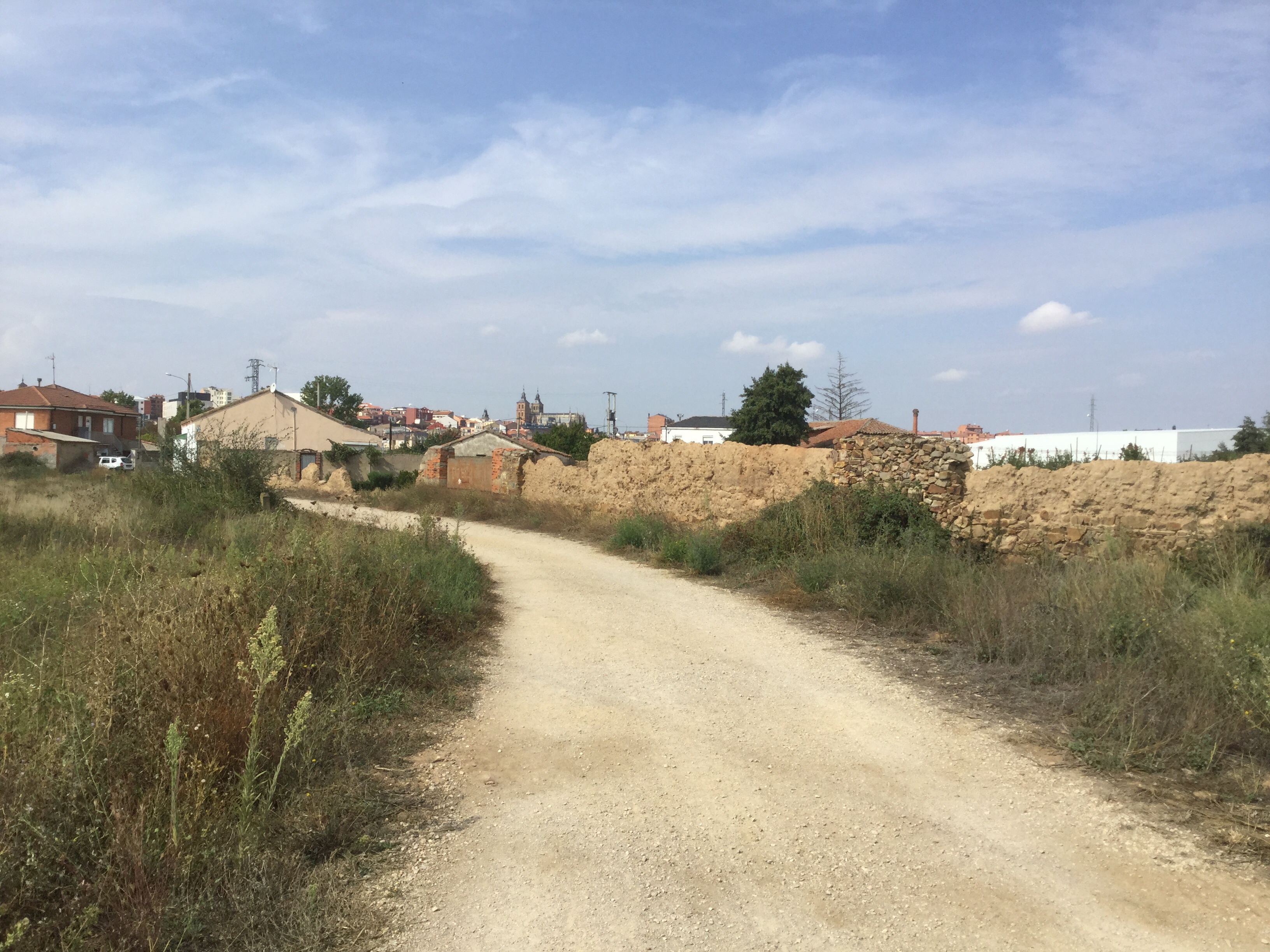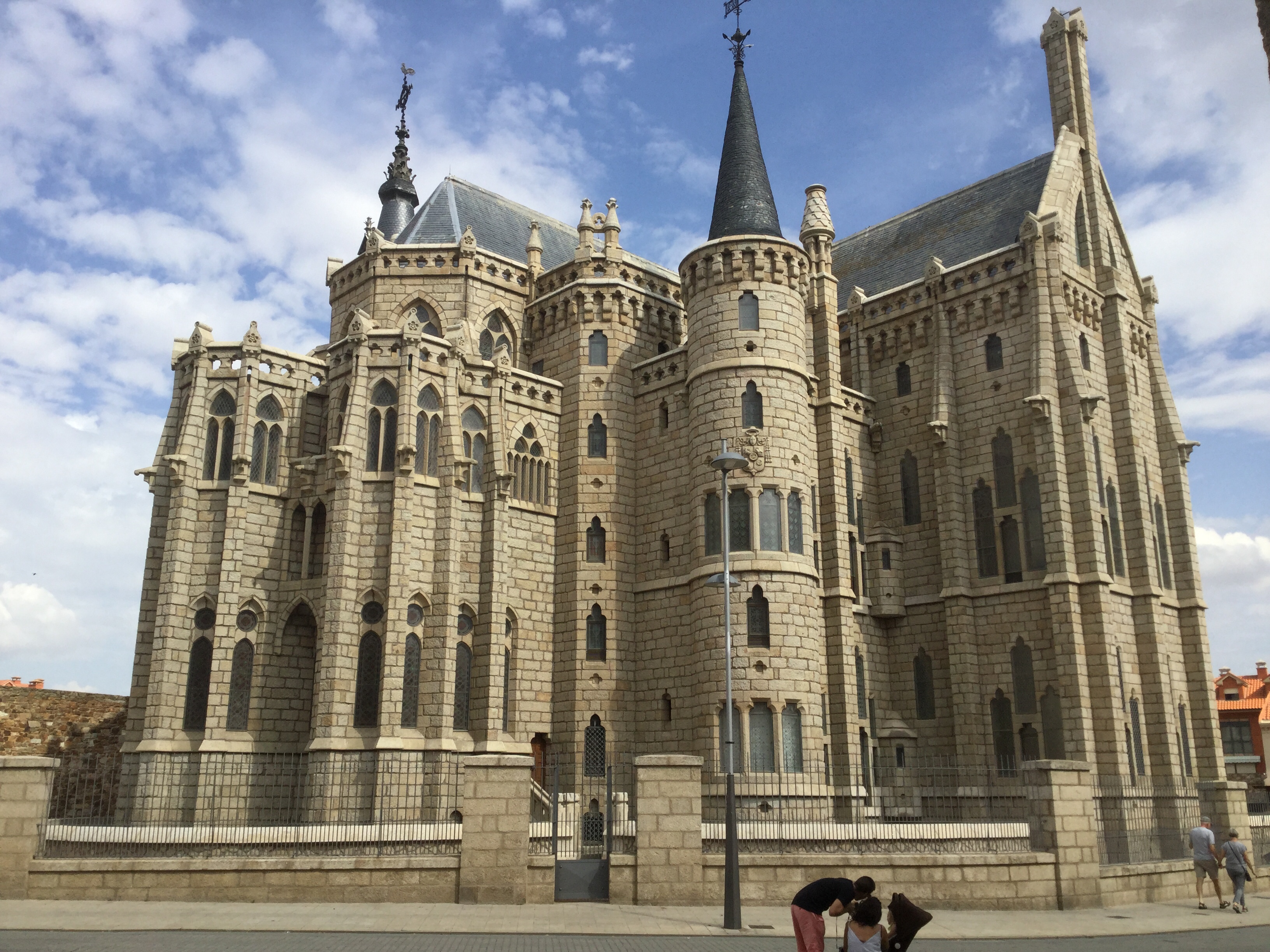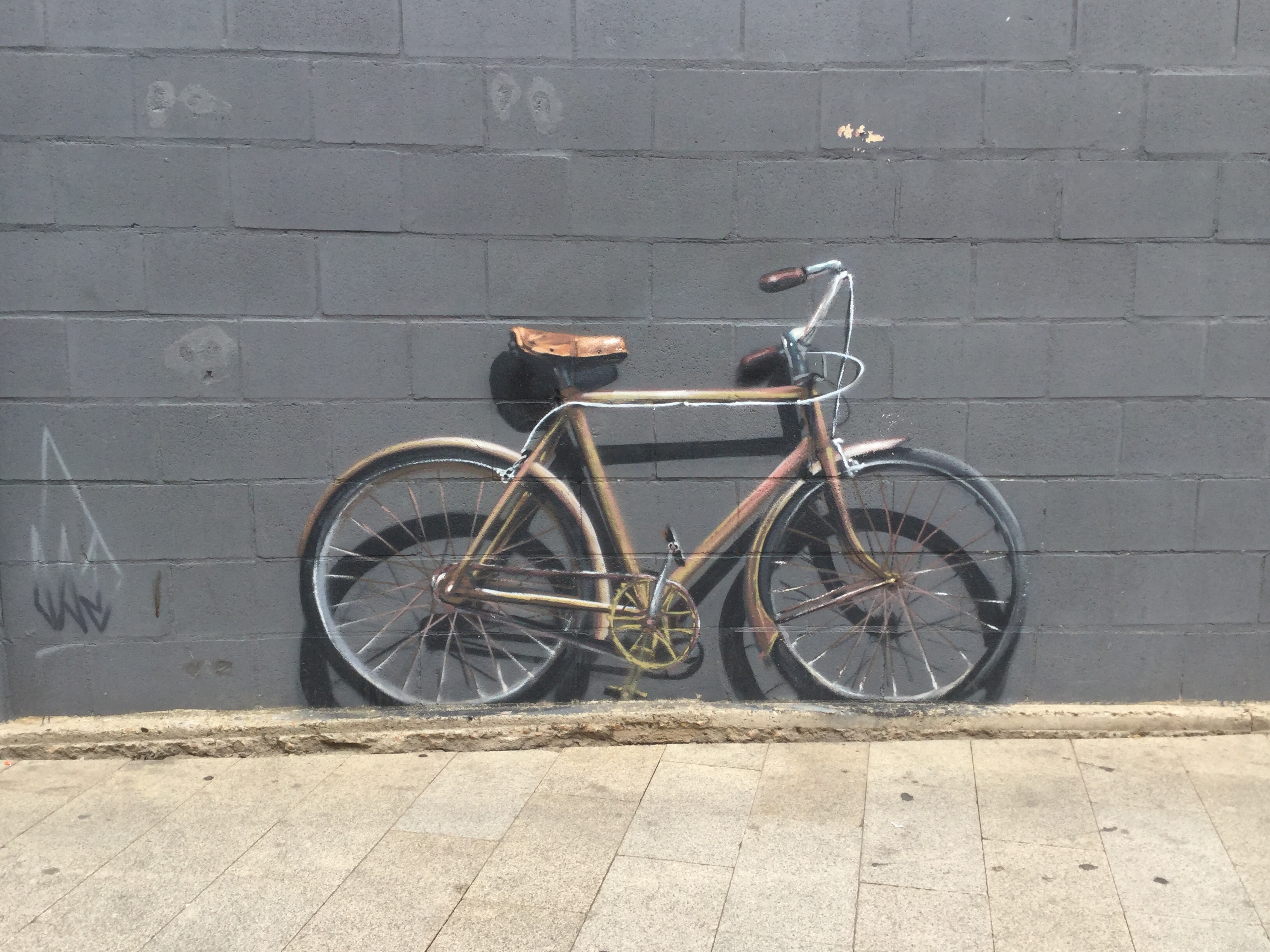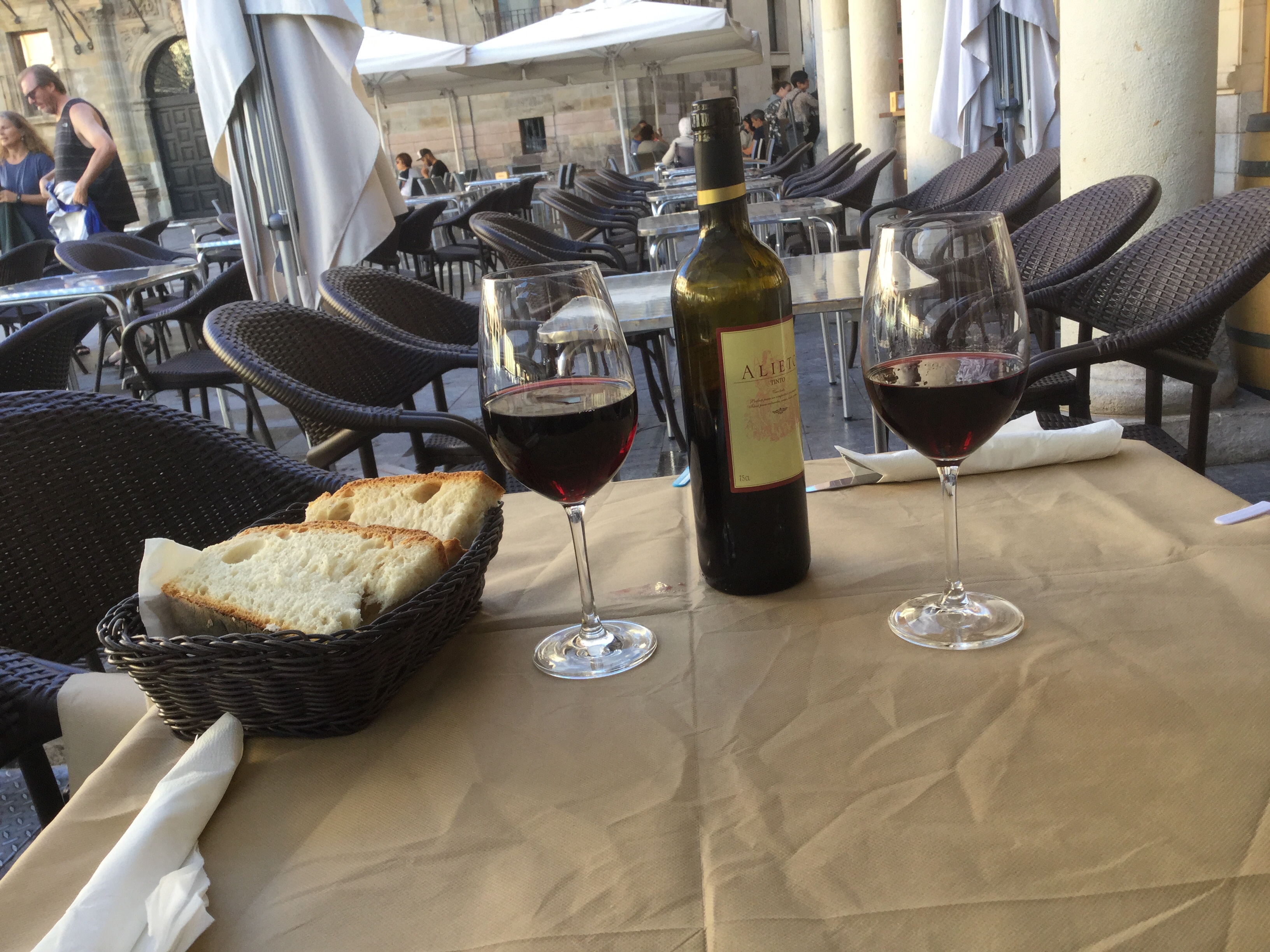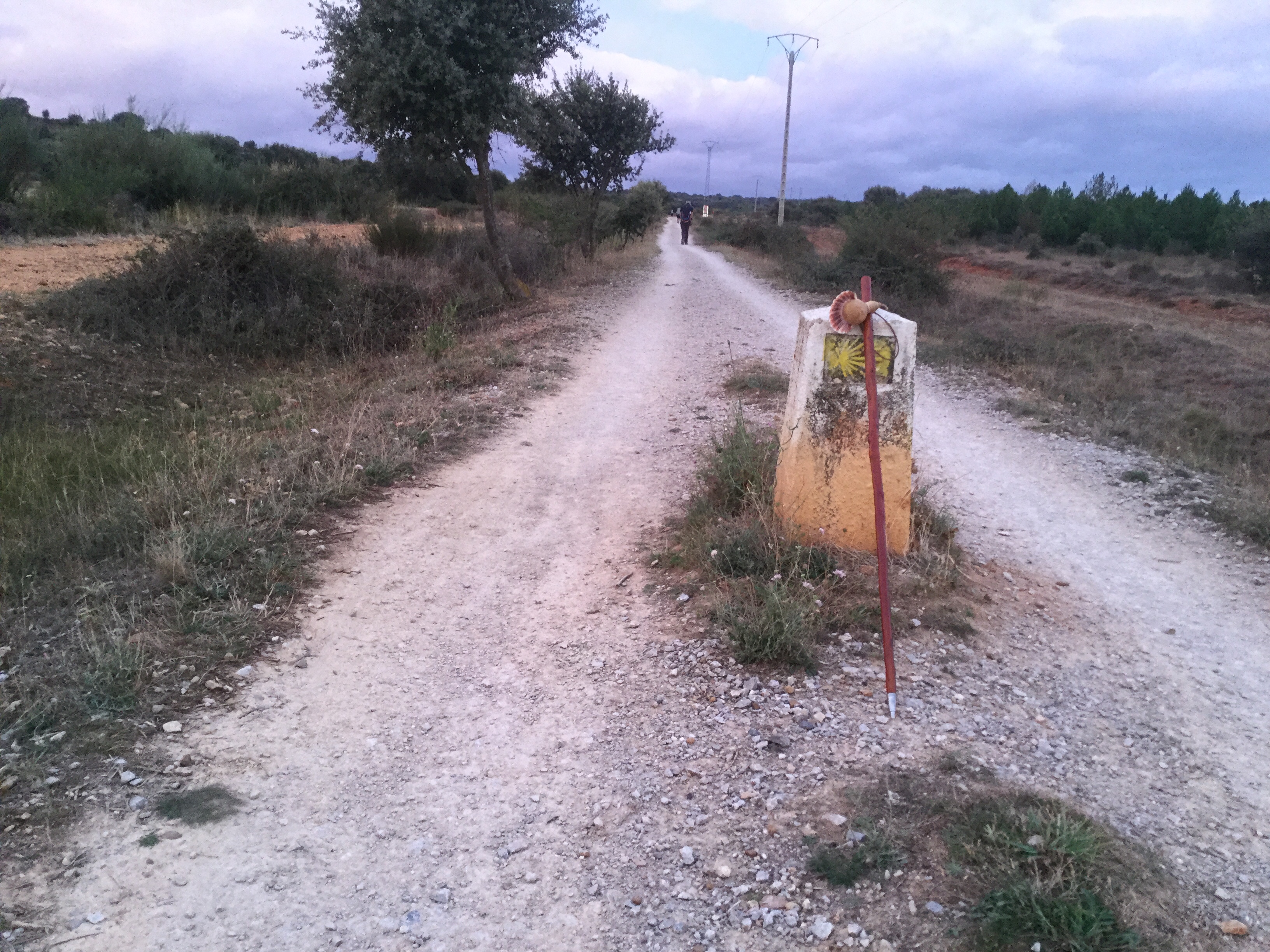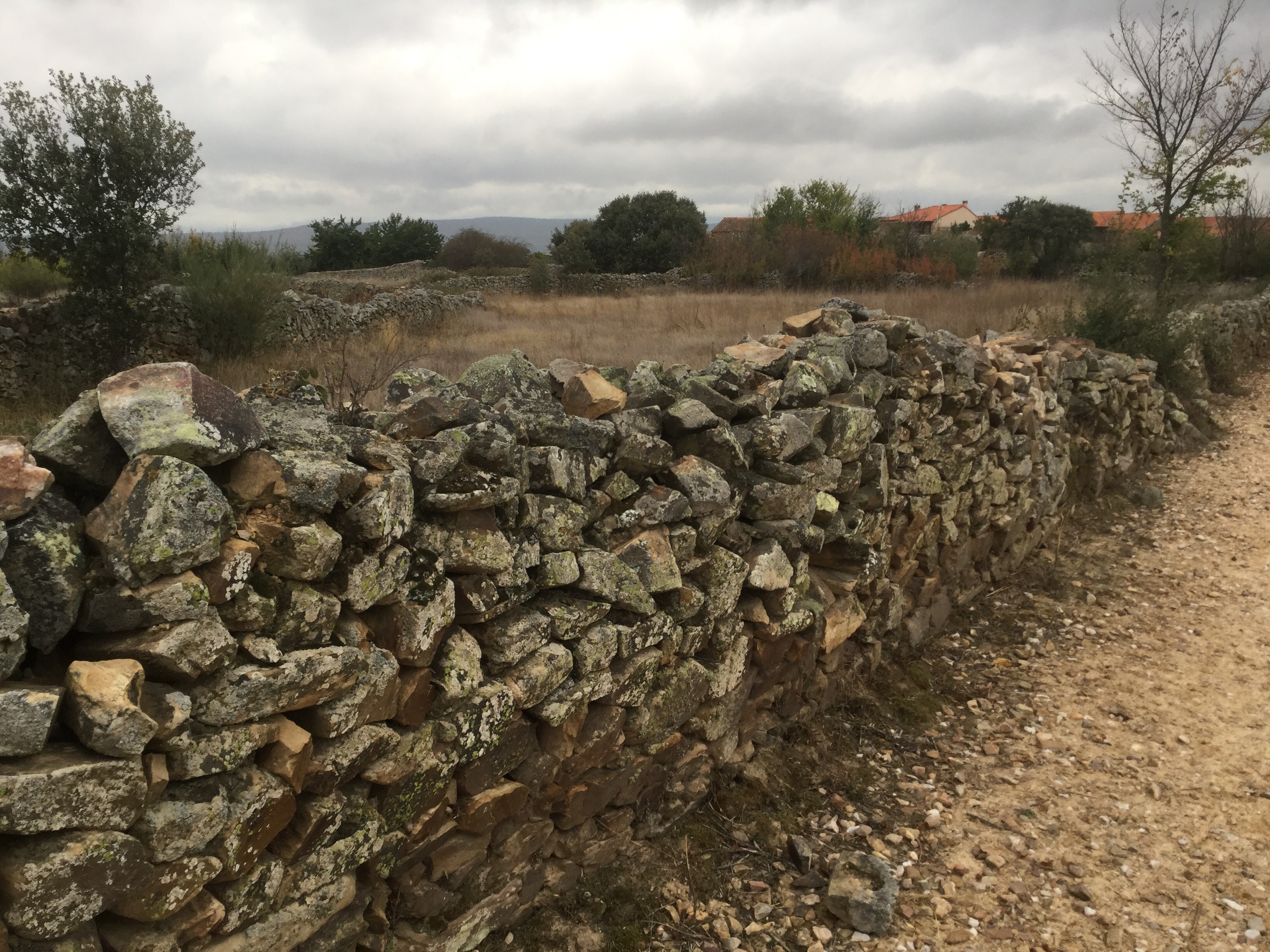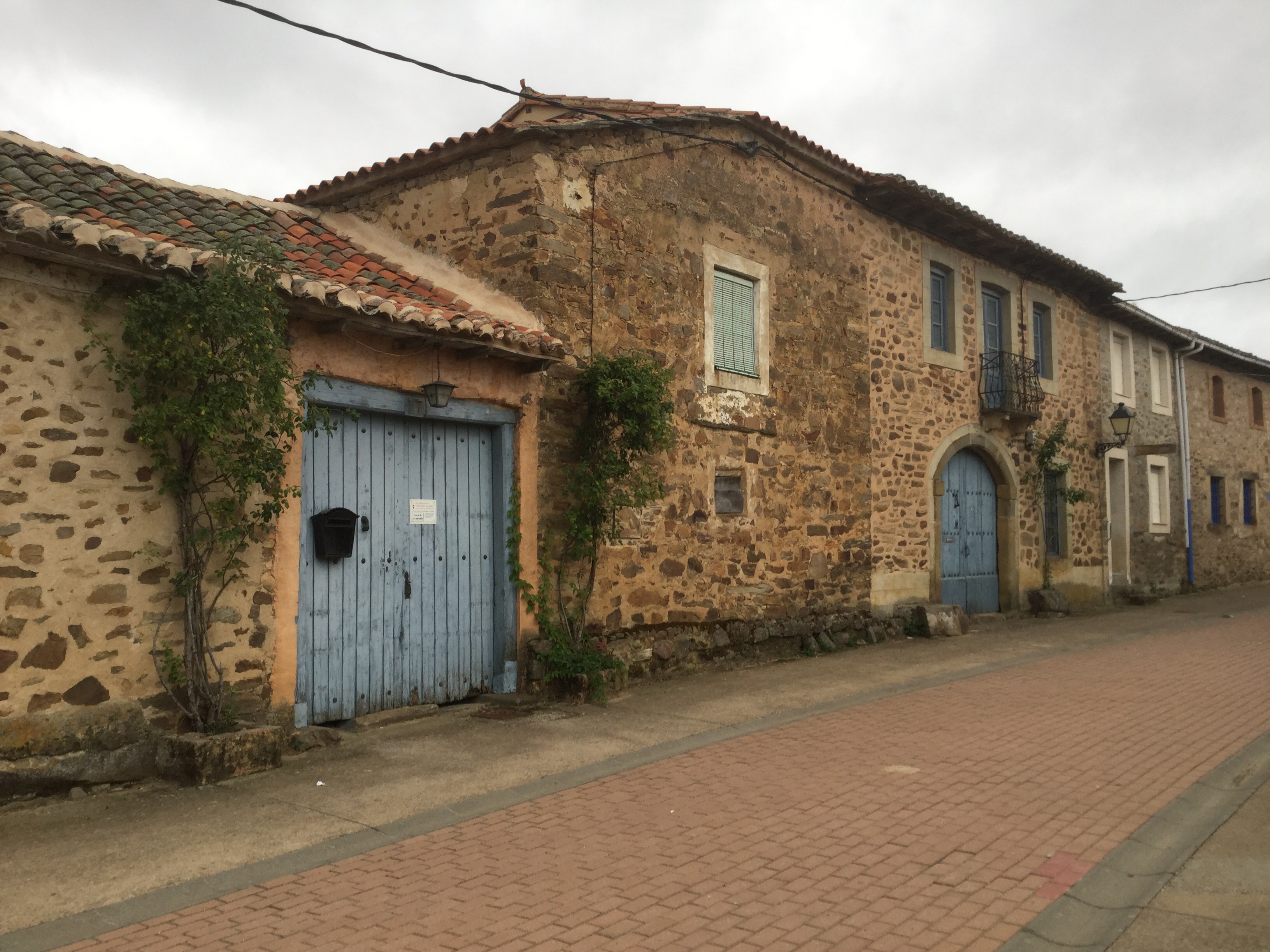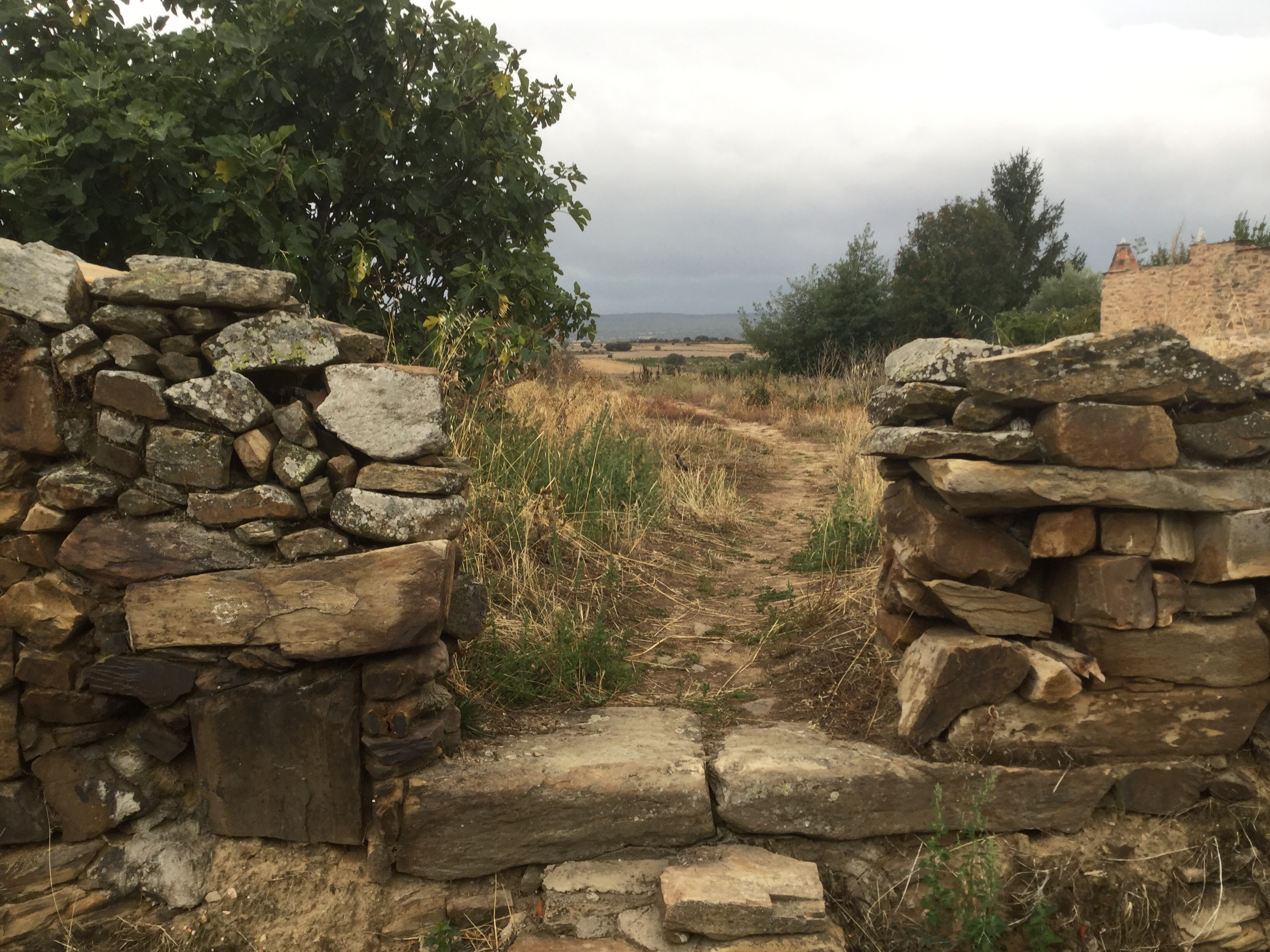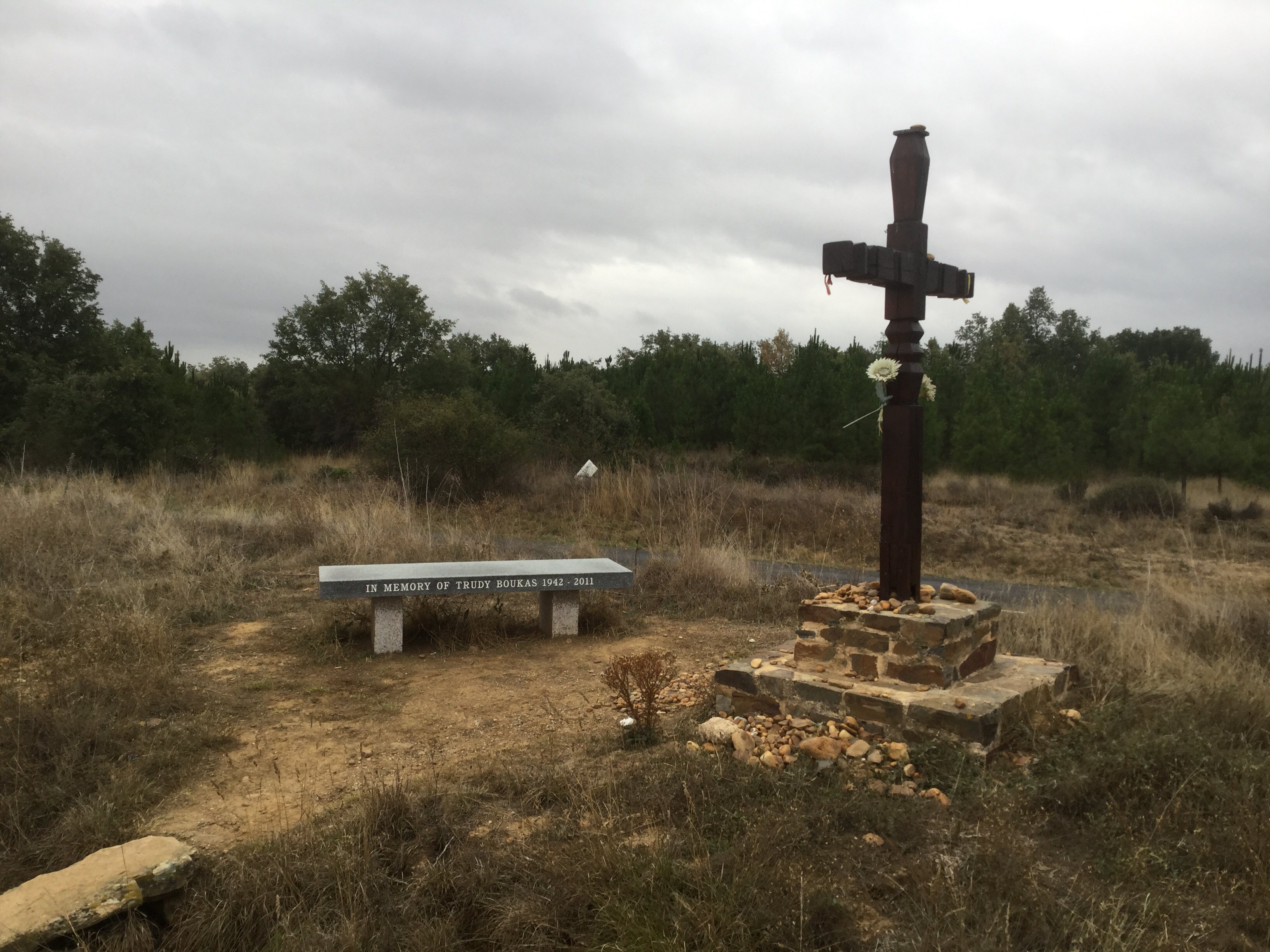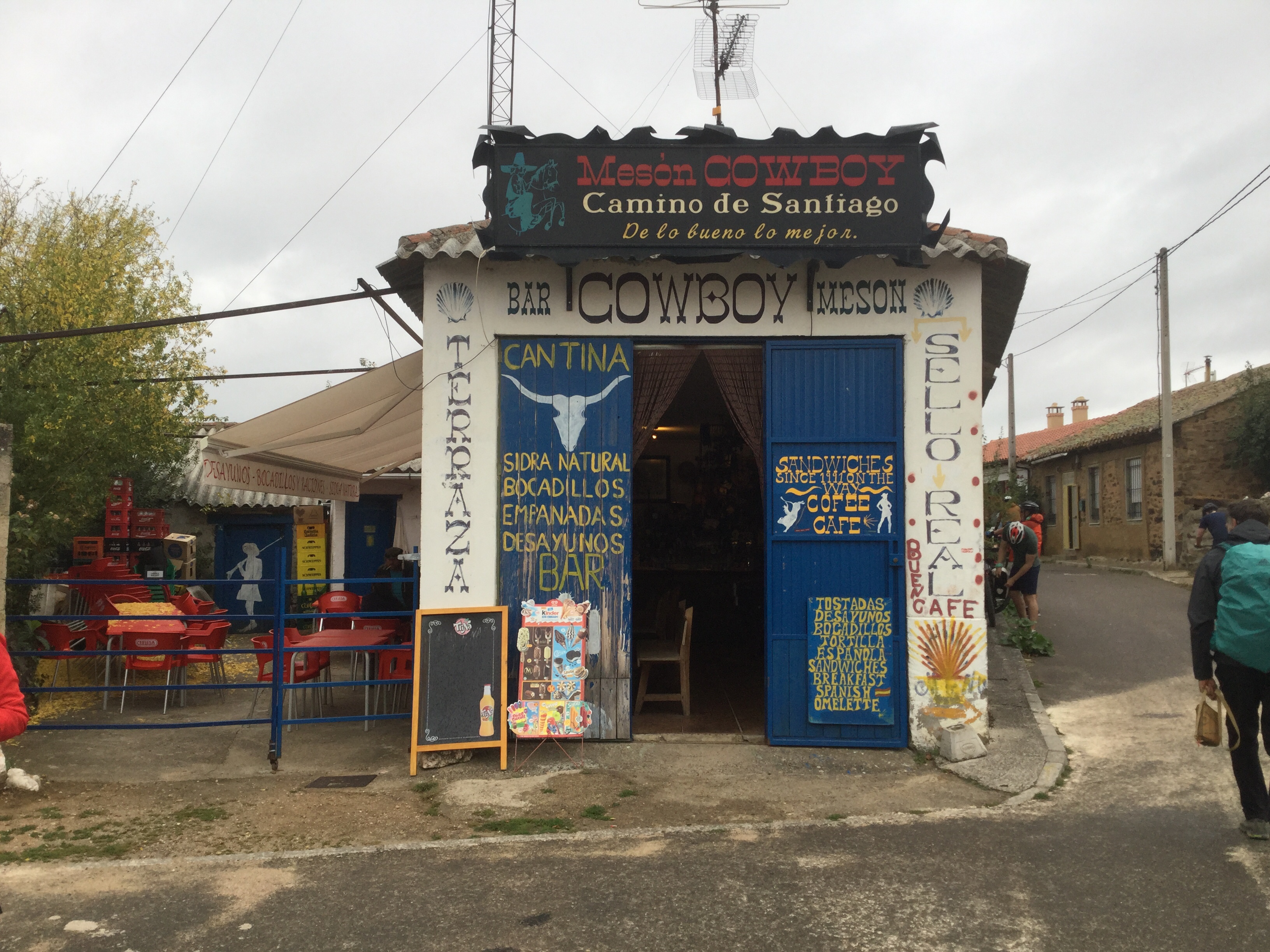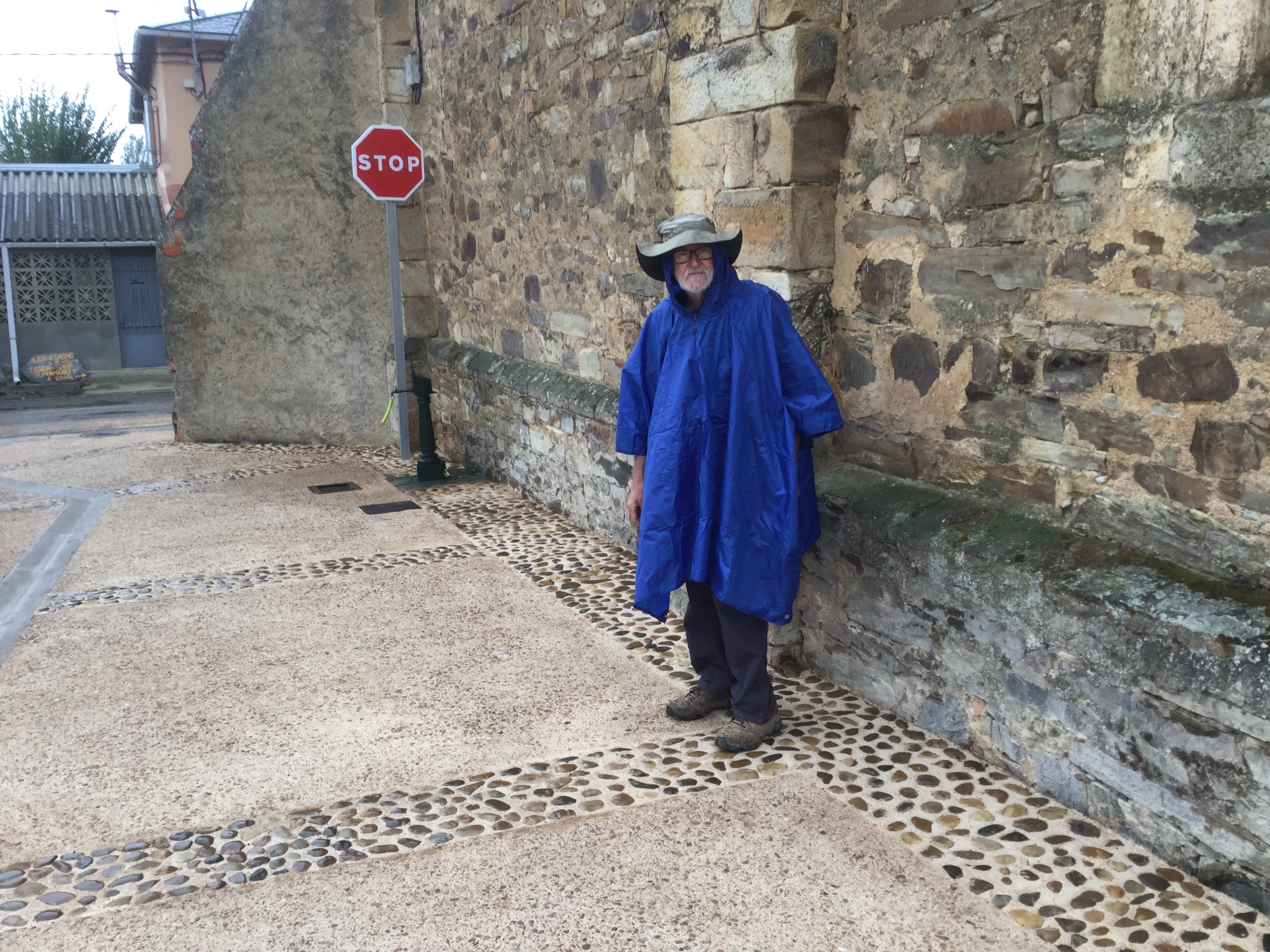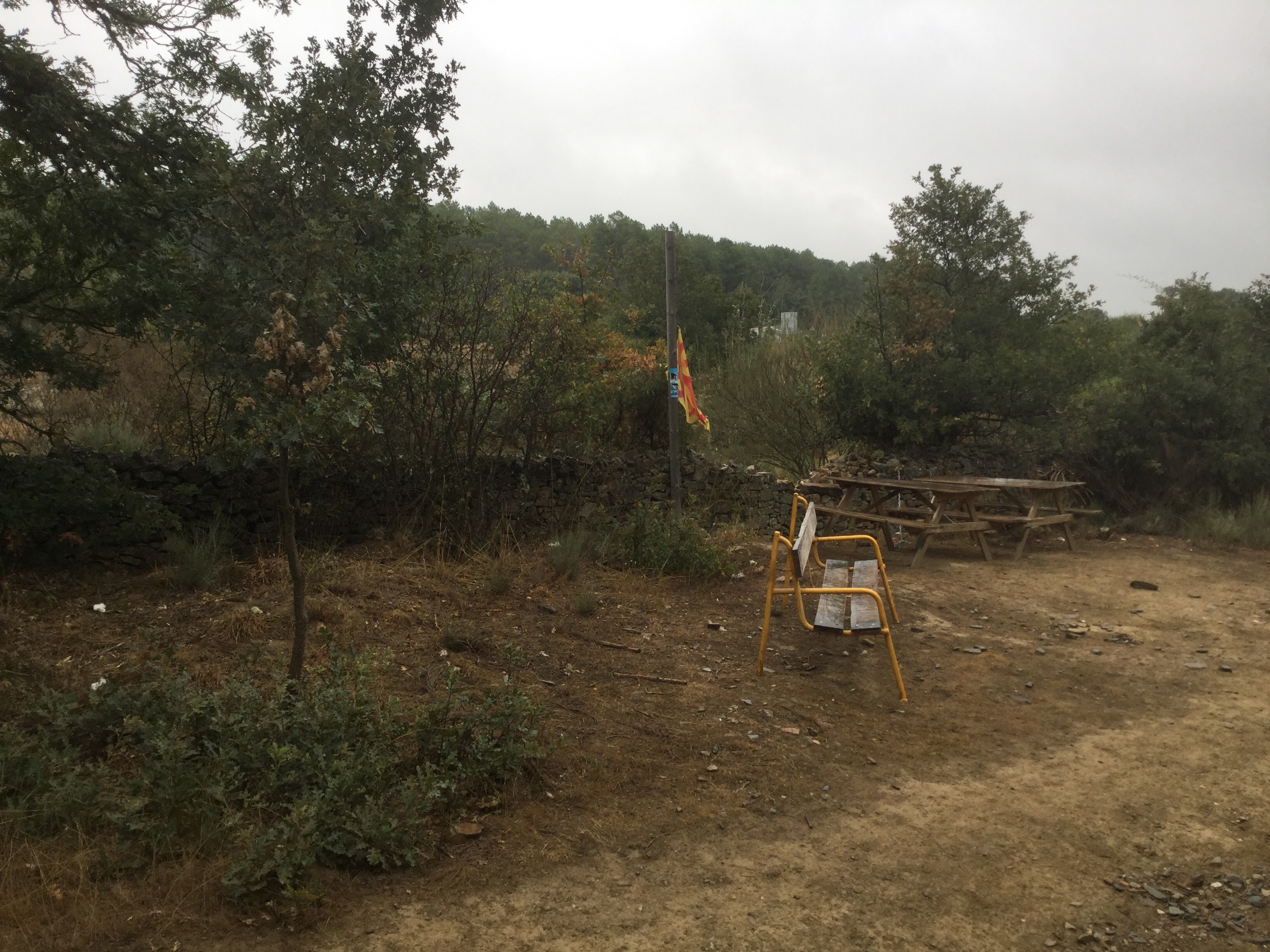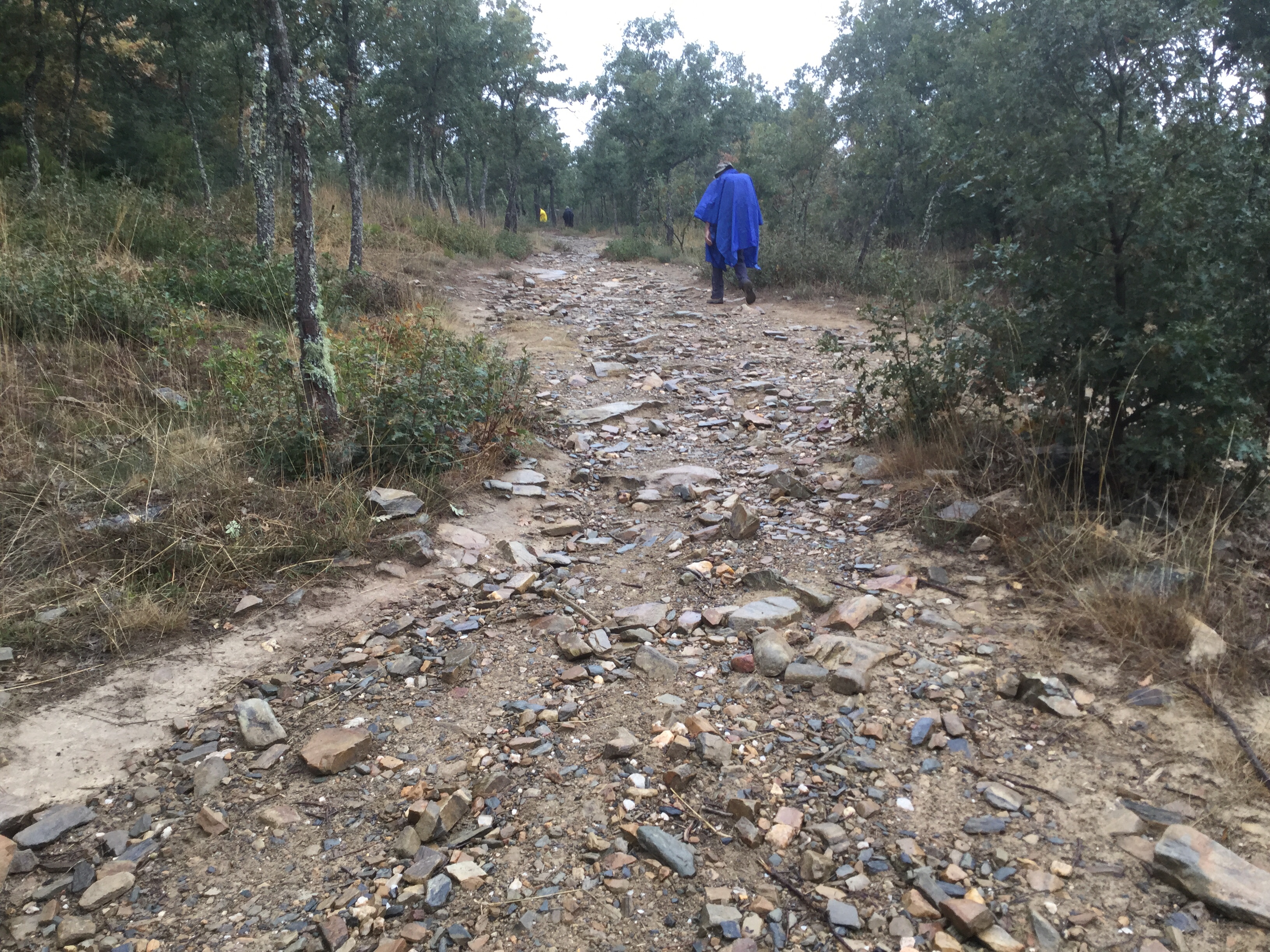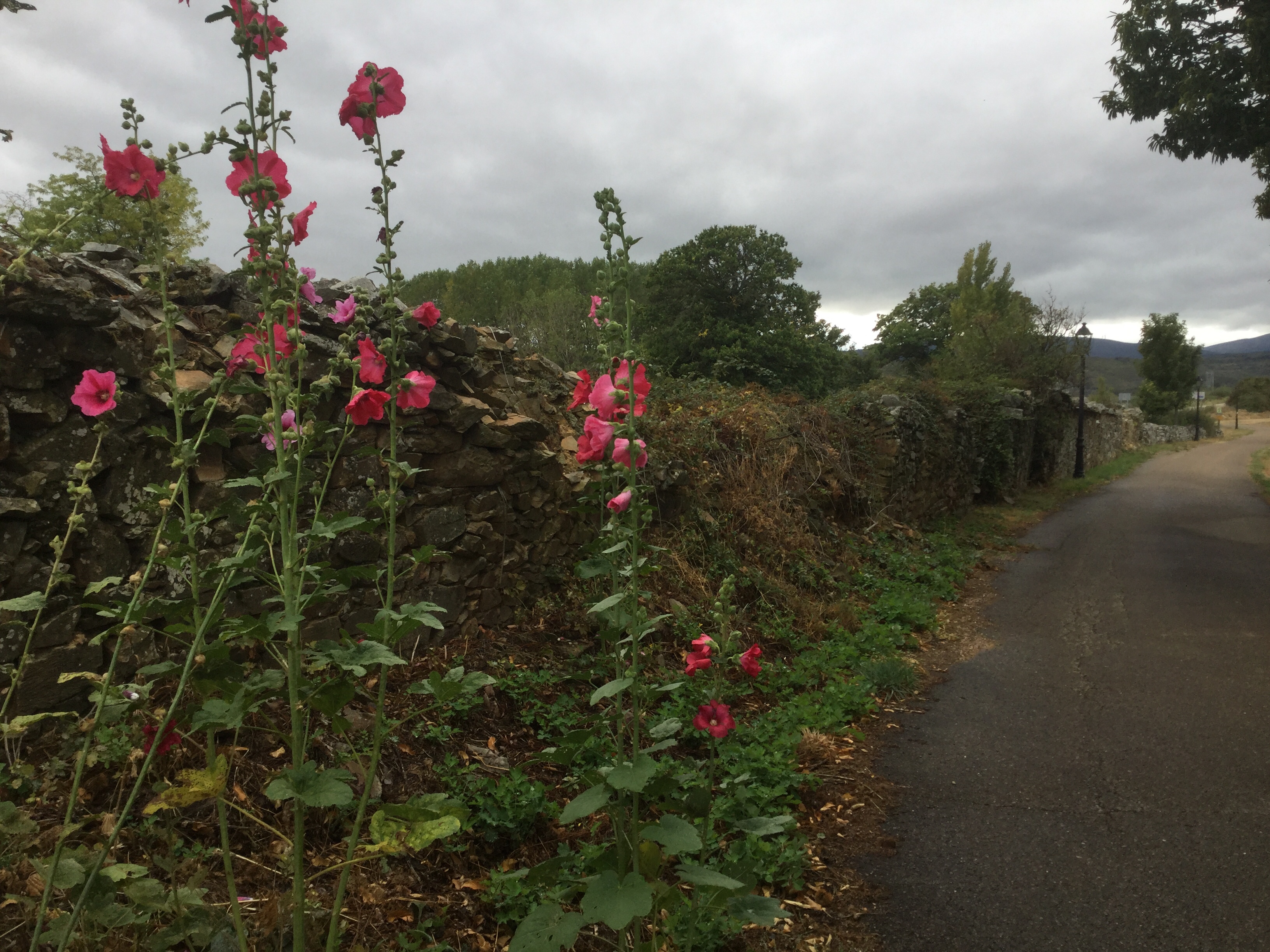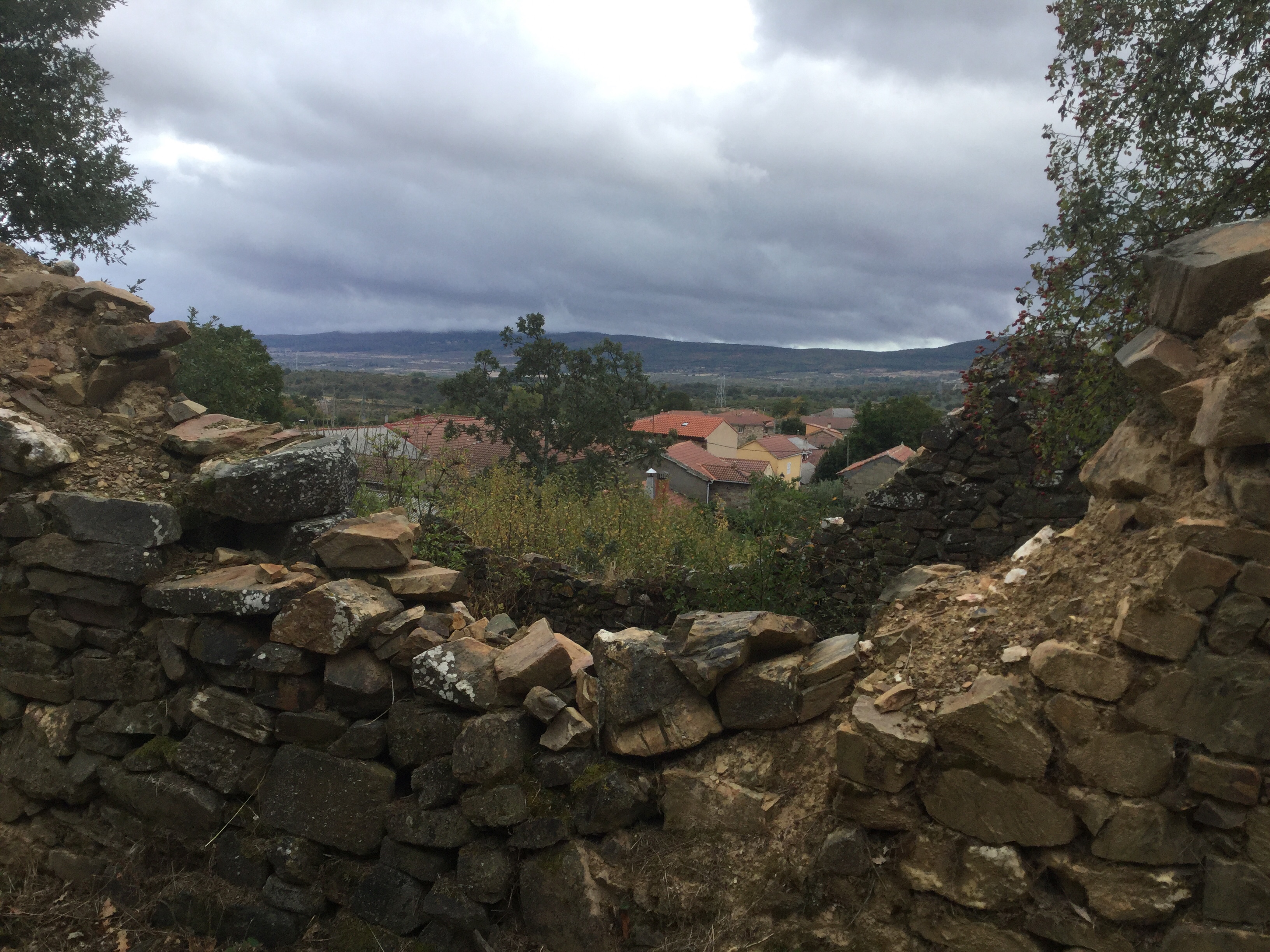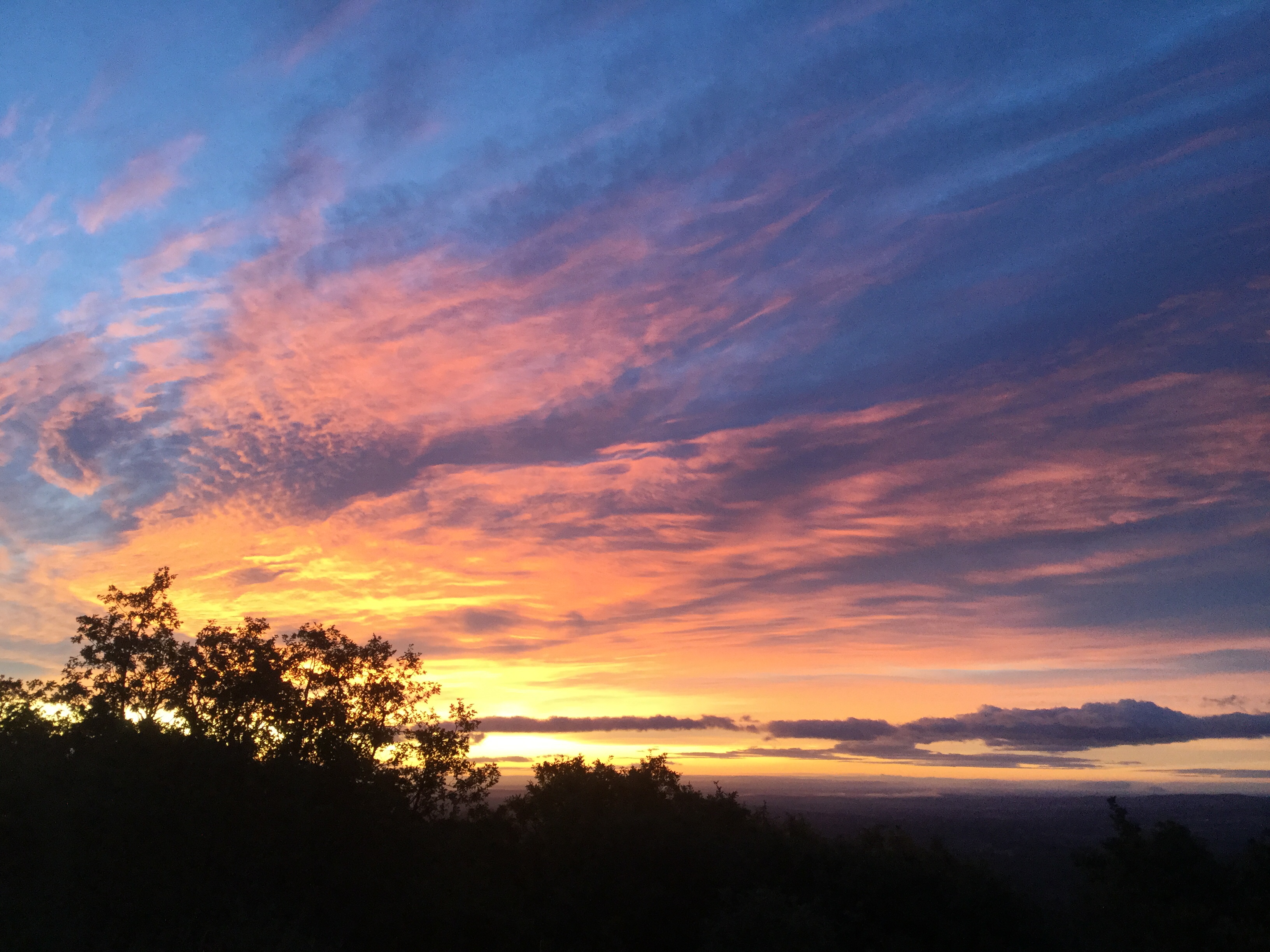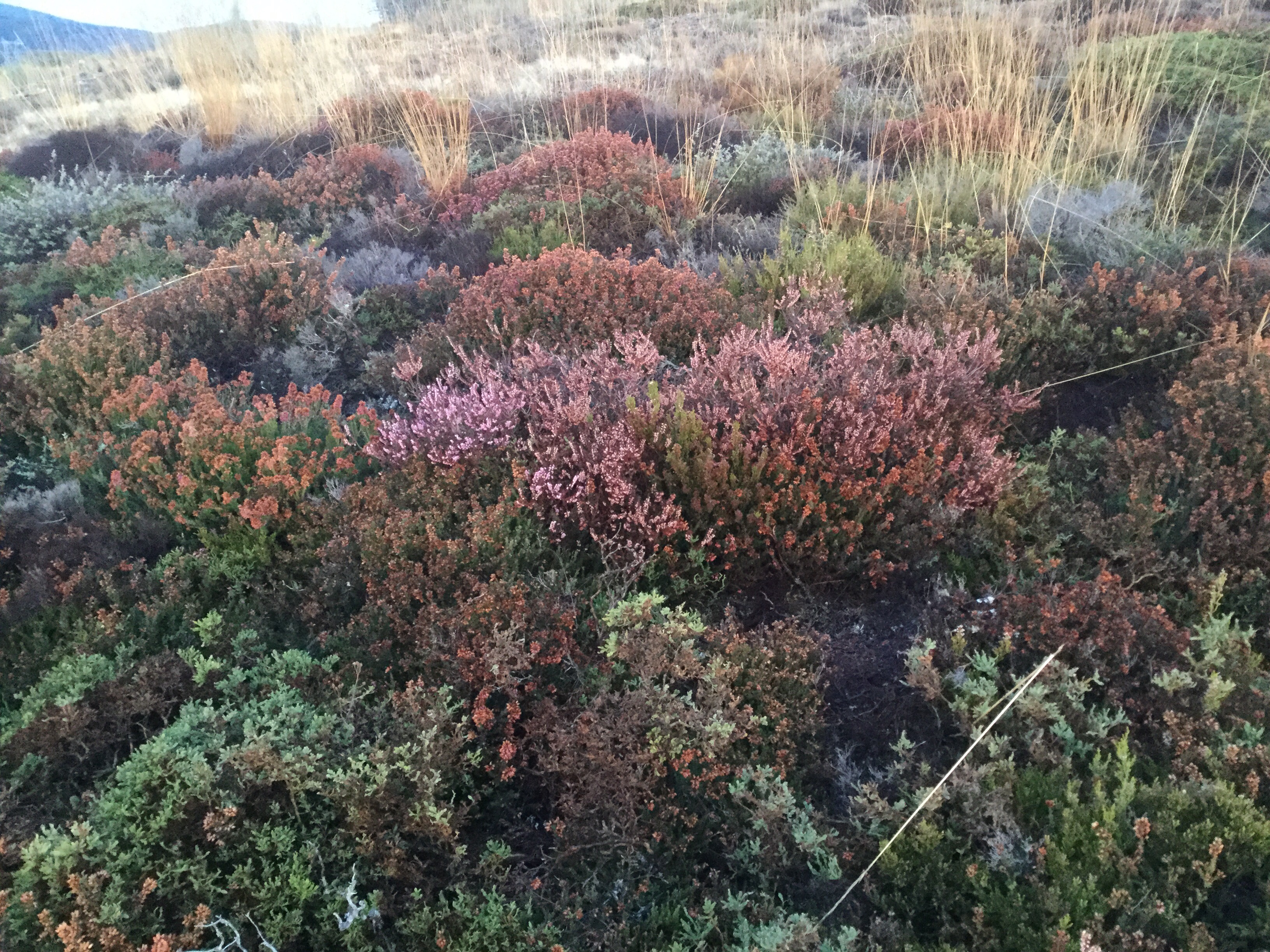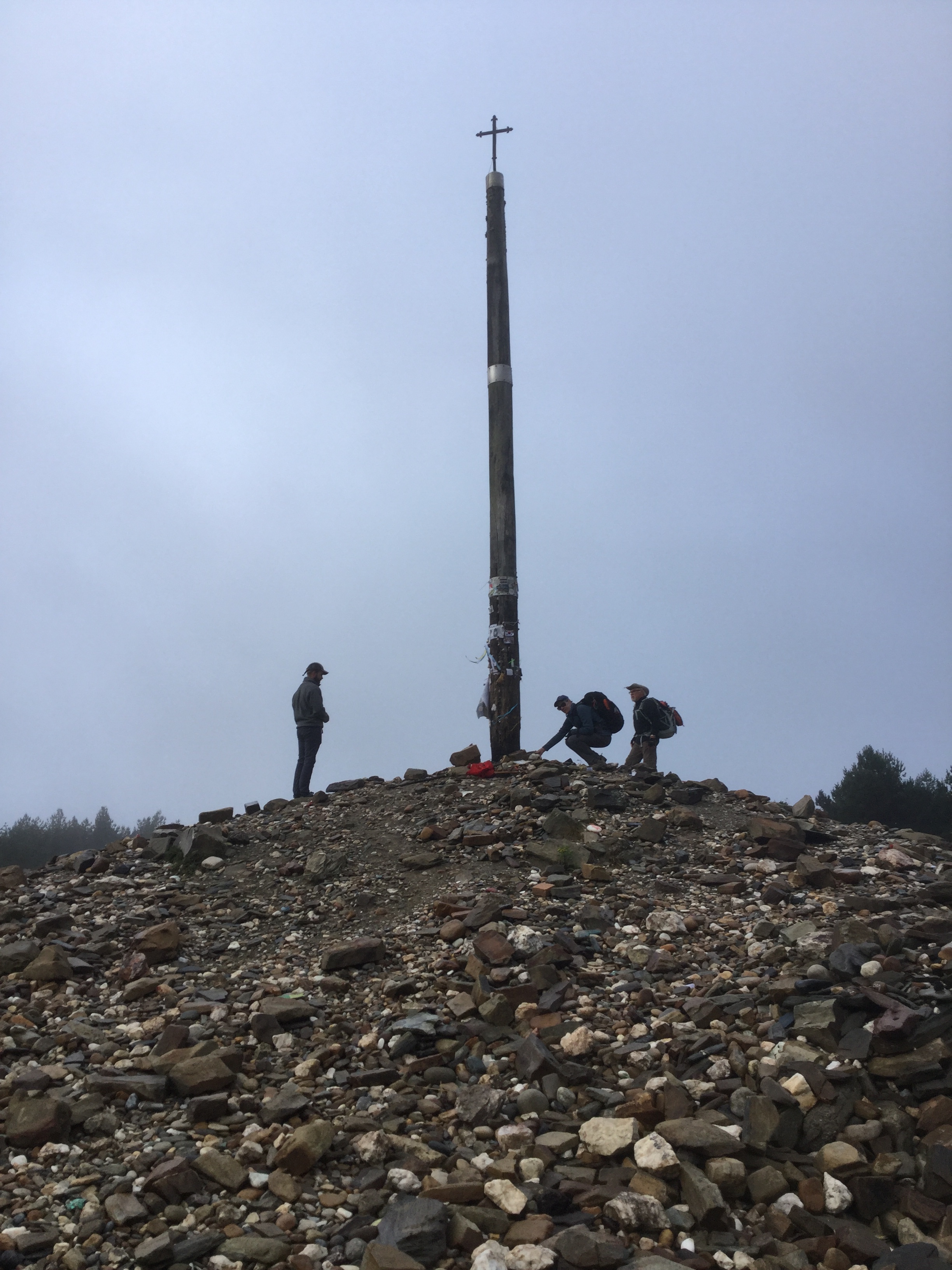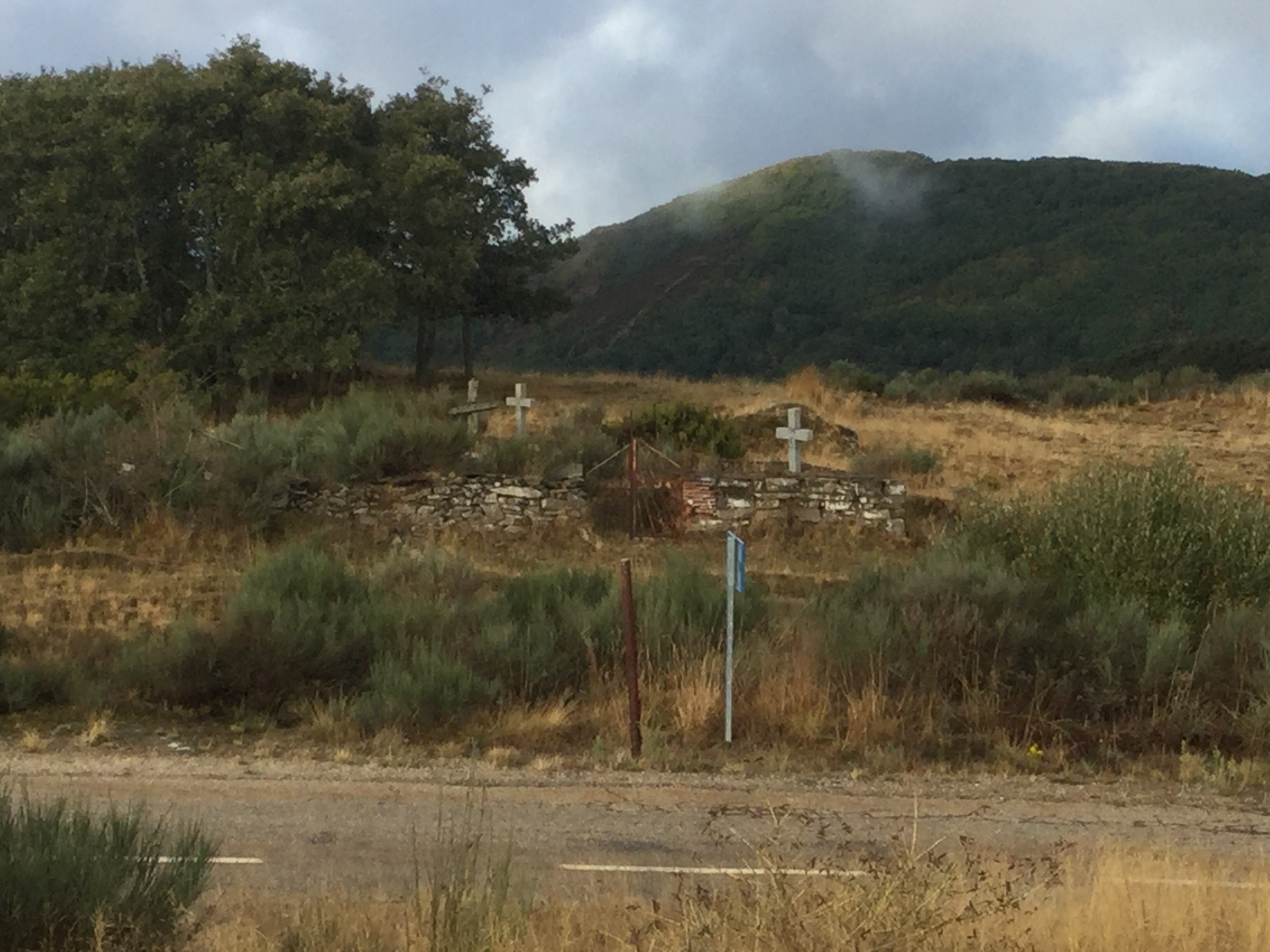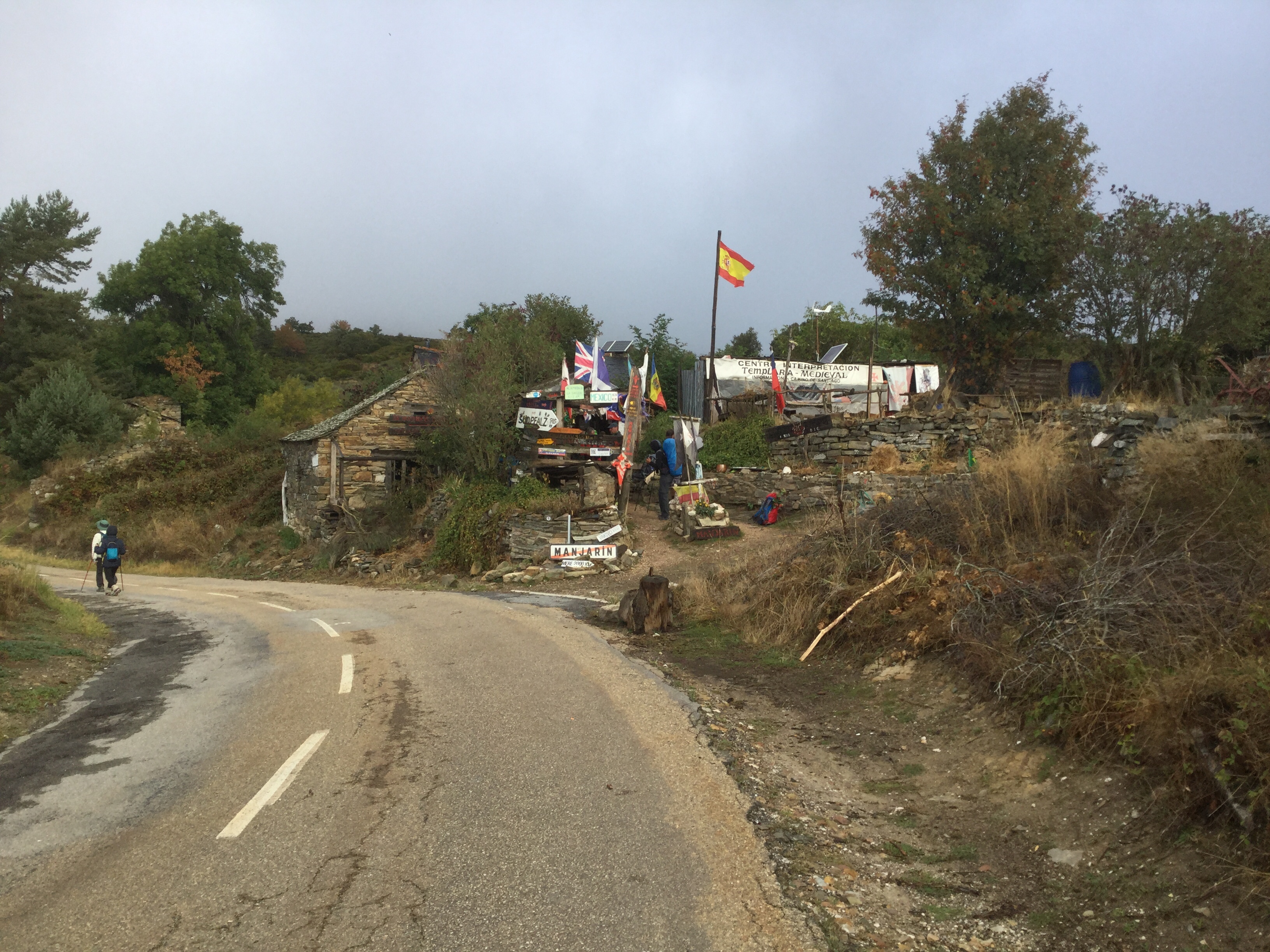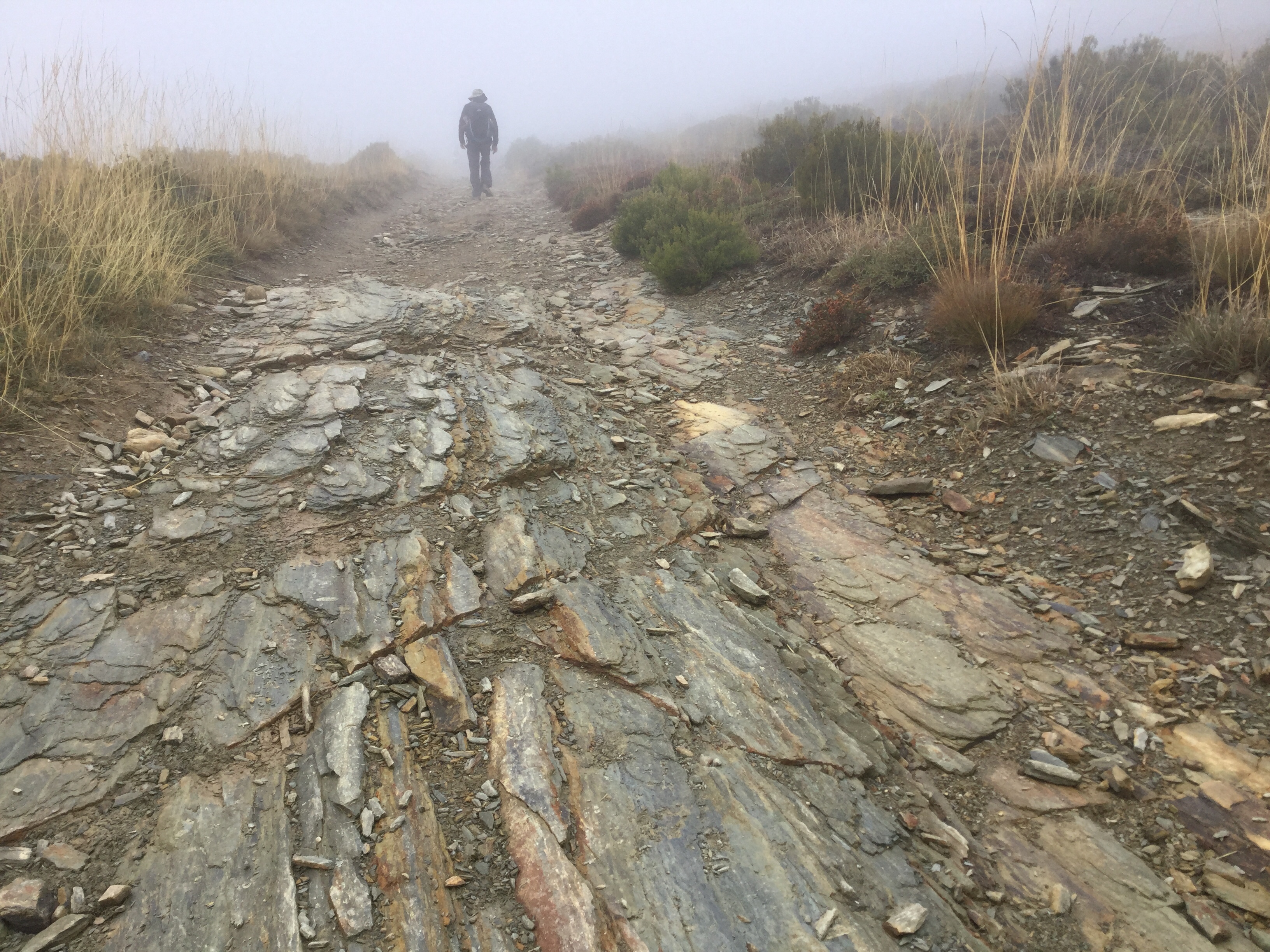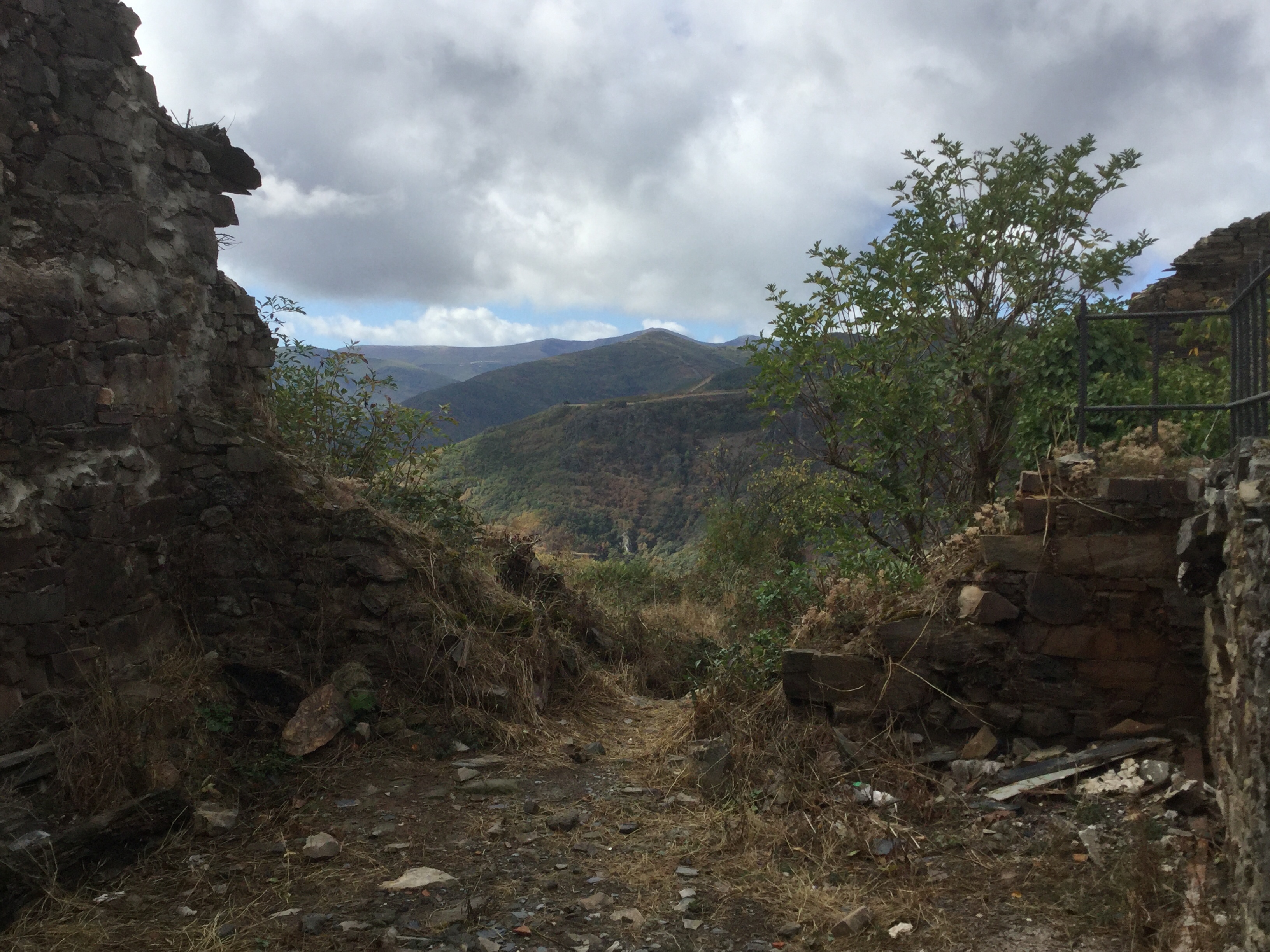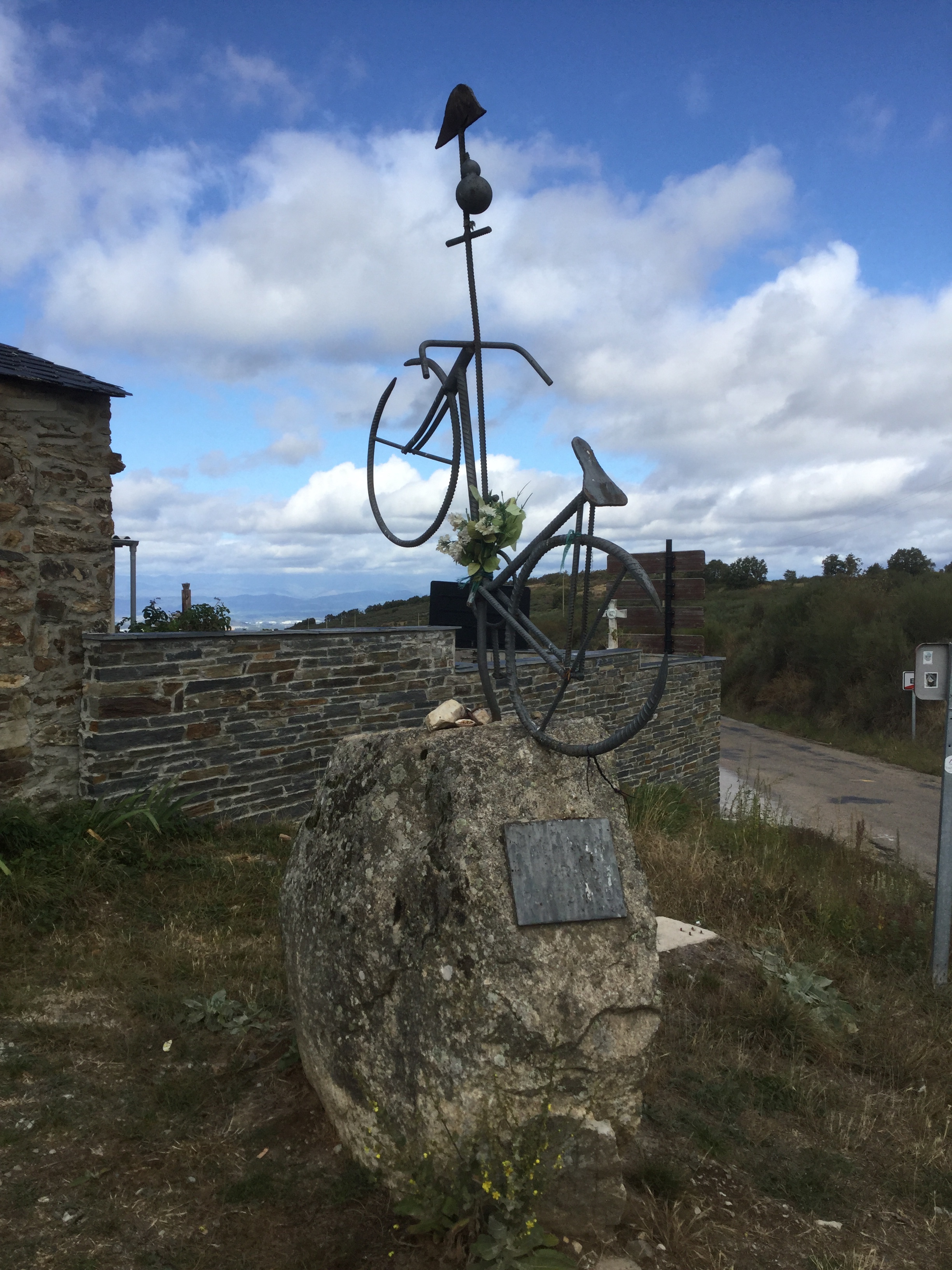Things León
The thunderstorm brought rain last night but is was gone before we left Villarente this morning. Once again the morning sky was dark and threatening and we kept looking skyward, waiting for the rain. It had been an easy 12 kilometre walk this morning and a few spots of rain fell as we entered León.
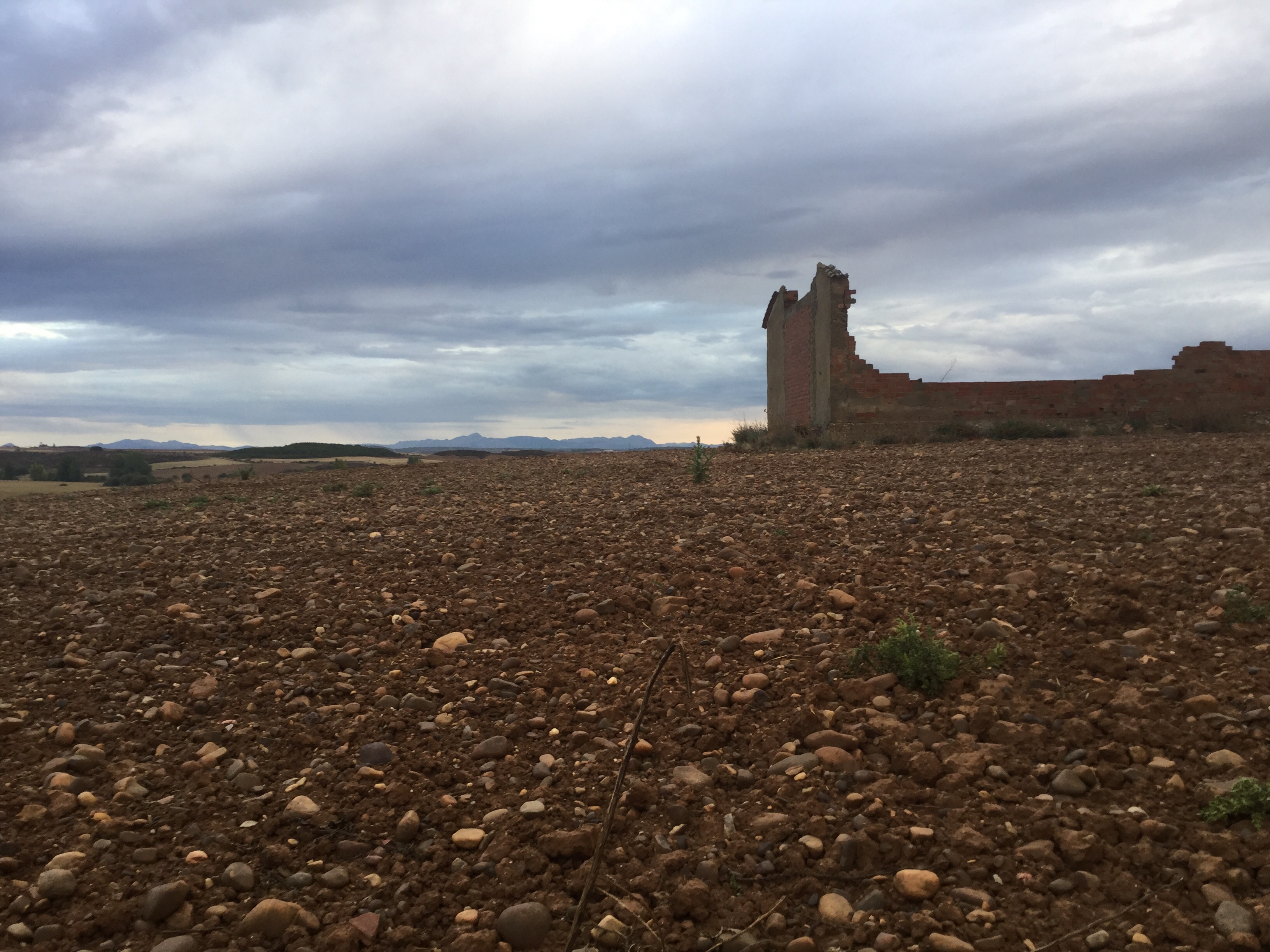
It was a nice walk through the newer part of town, it was interesting and well signed and we were not disappointed when we reached the old town. We arrived through the old city gate Puerta Moneda with a very extensive city wall that has seen several updates.

We spent a good couple of hours exploring León and it didn’t disappoint. The old city streets…
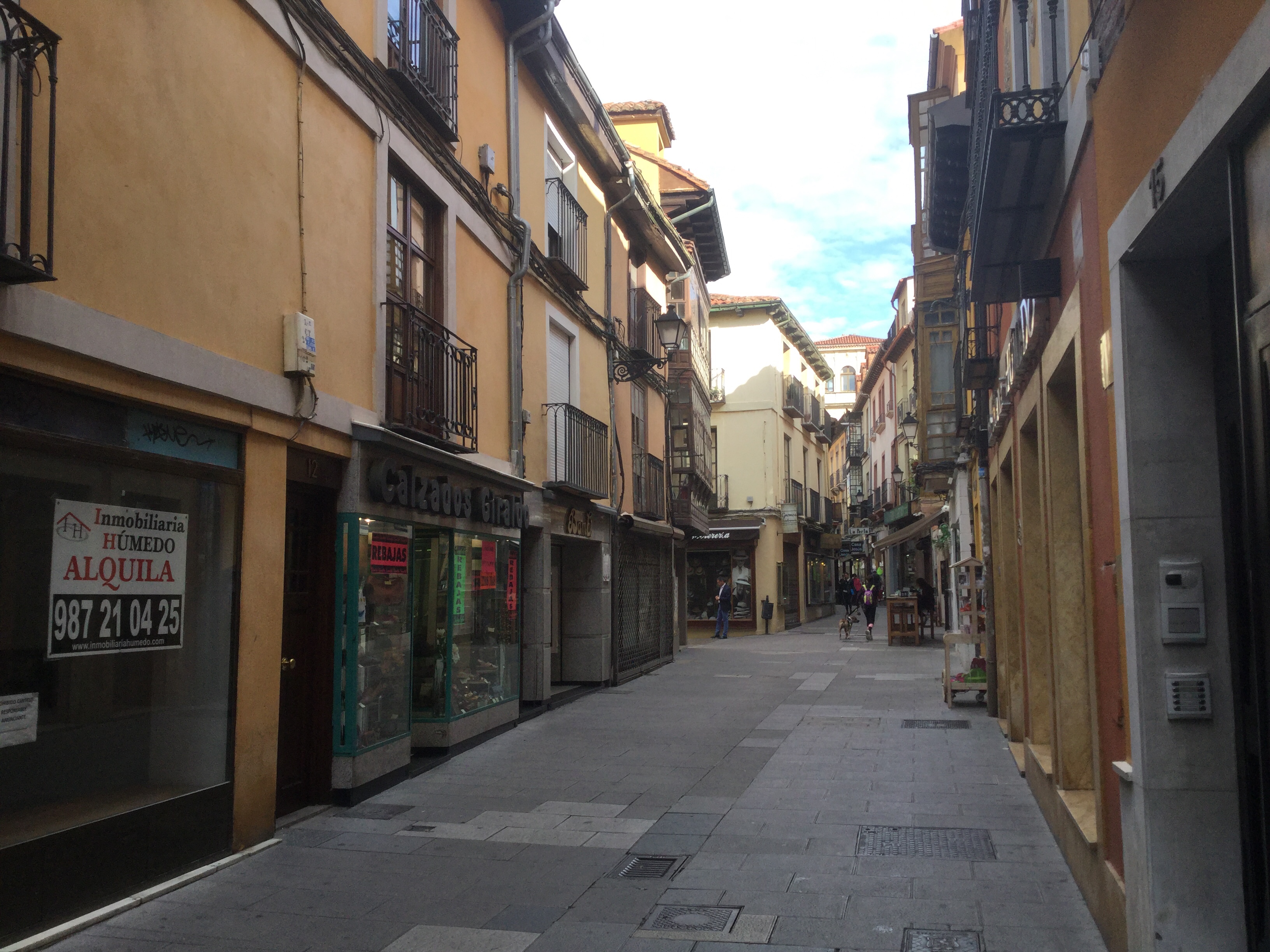
Gaudi’s neo-Gothic palace, Casa de Botines…
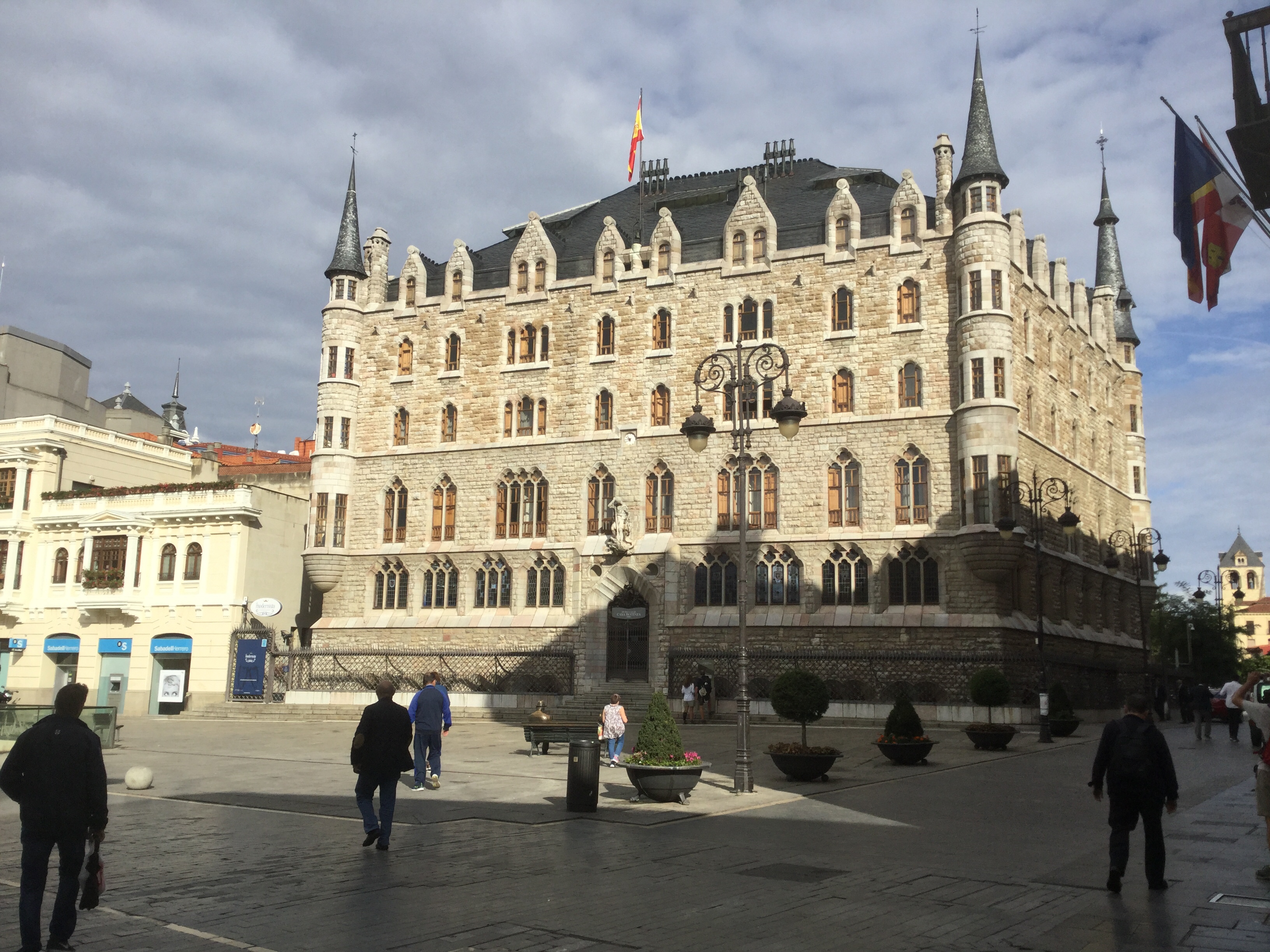
and of course Leon Cathedral. It is having renovation work at present but it didn’t distract from its beauty.
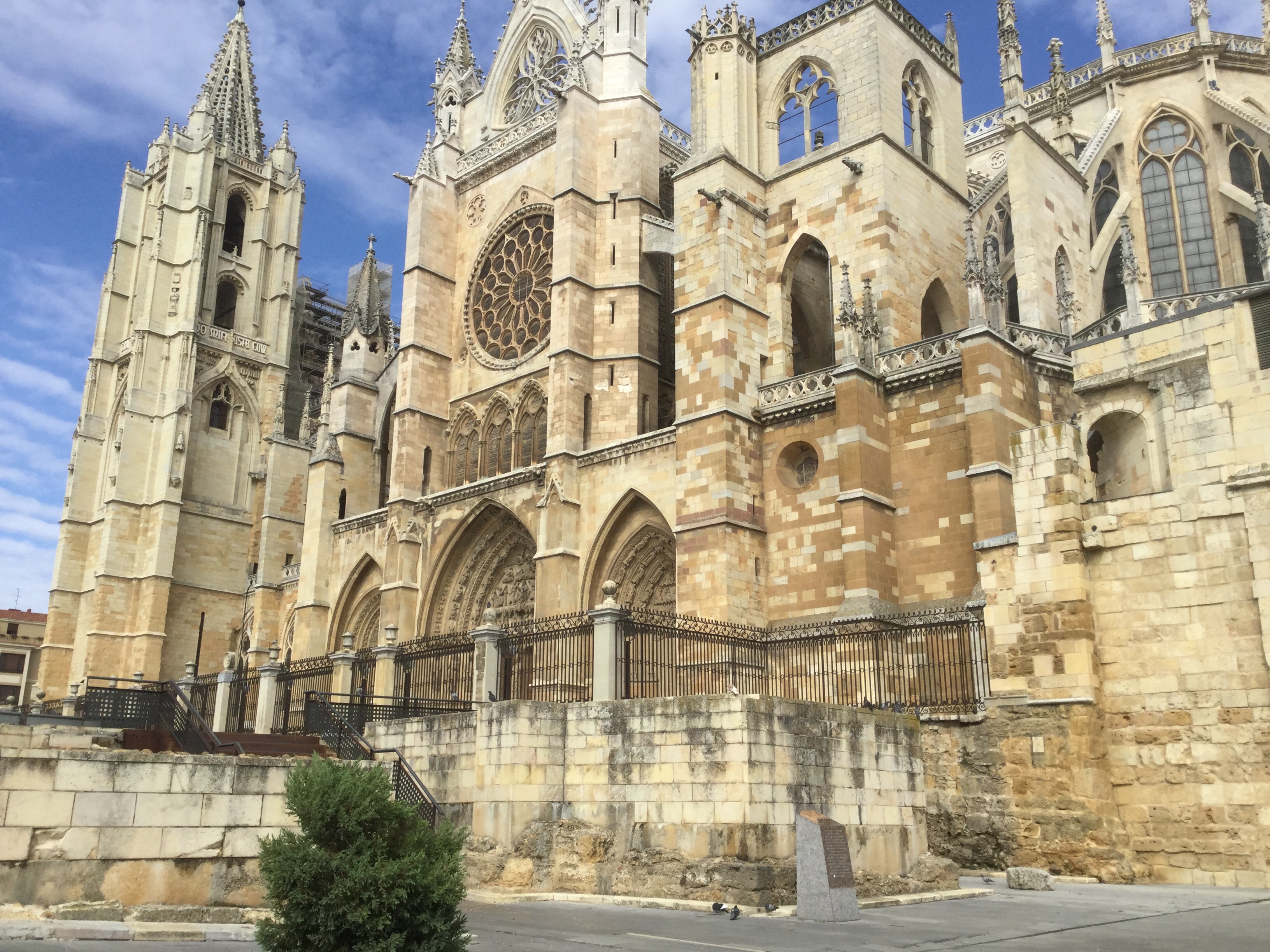
We hadn’t made plans on where we were staying or what we were doing. We looked skyward again and feeling brave -or foolhardy- we decided to head out. In Plaza San Marcos a life size pilgrim sandals off has a rest under the cross.

Light spitty rain had us guessing again as to whether we would get wet but we held off putting on the waterproofing. We eventually stopped at La Virgen del Camino – dry. It has a modern church built in 1962. A modern church is a rarity on the Camino. The sculptures depict Mary and the Twelve Apostles. Outstanding.
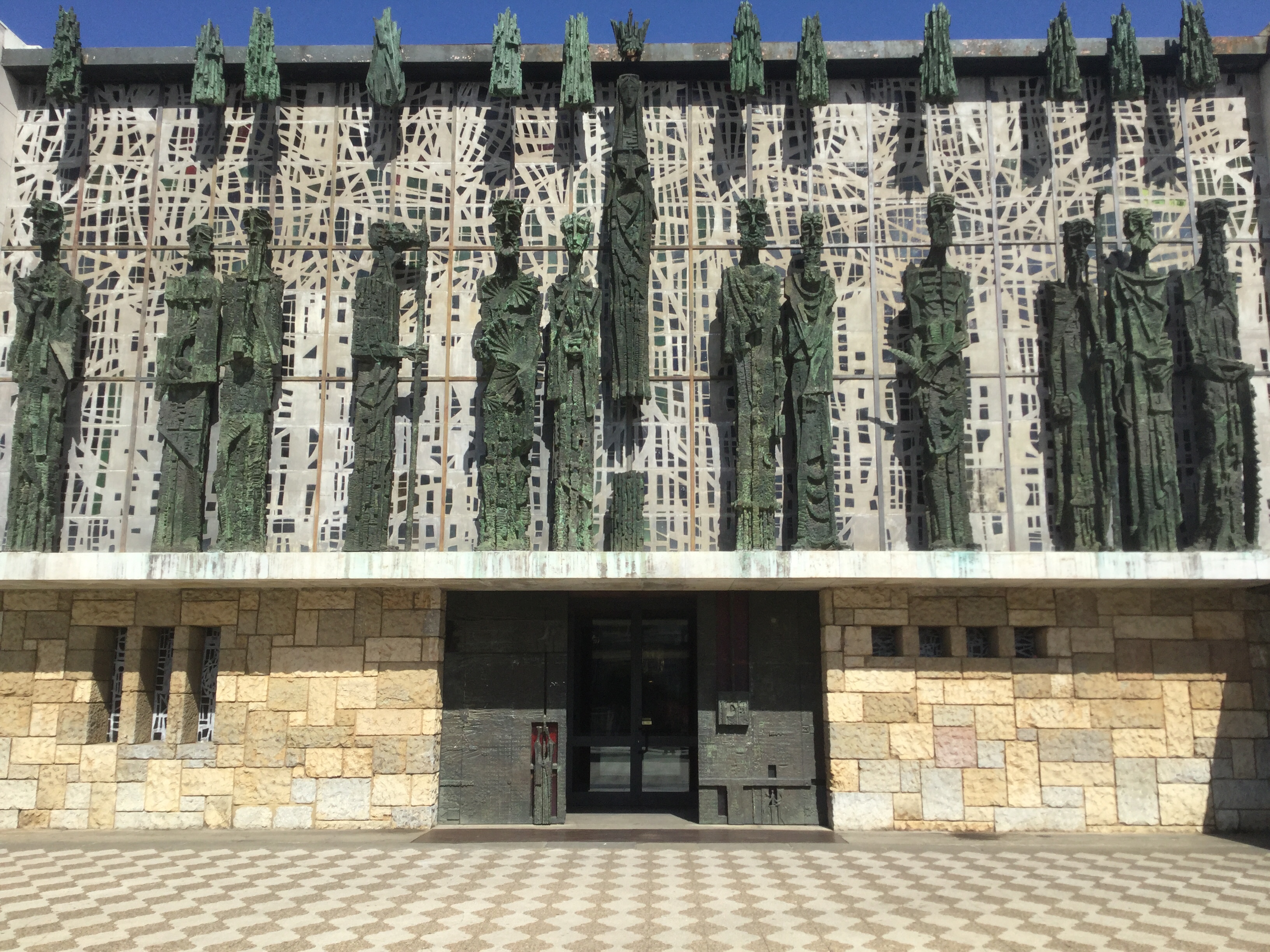
We sat on the terrace of a bar and enjoyed a wine. Grandpa Dave decided his babysitting services was needed to keep the two 11 month olds at the next table entertained. They were certainly enjoying his attention but I don’t know if their carers were quite as amused. The two littlies had been sitting quietly and happily beneath the table until Grandpa Dave intervened. Now they were crawling under tables and not being the perfect angels there were before. Bad Grandpa Dave.
